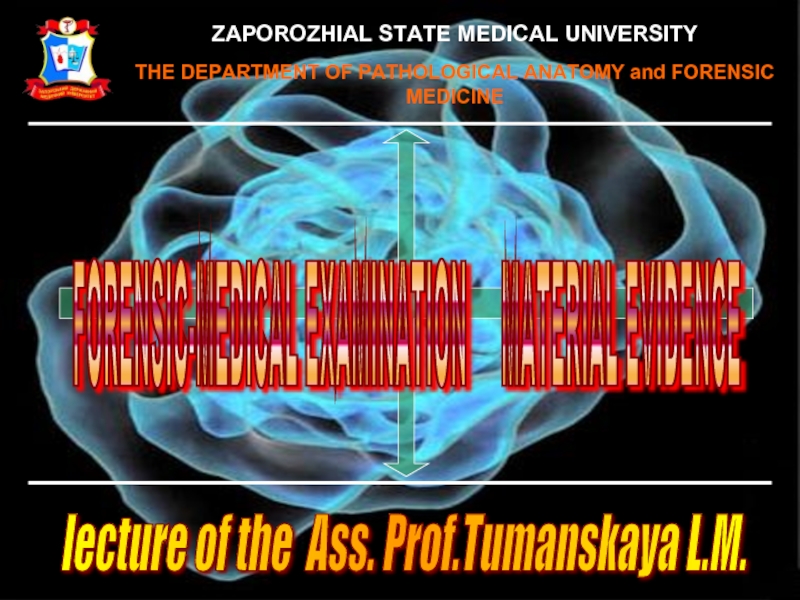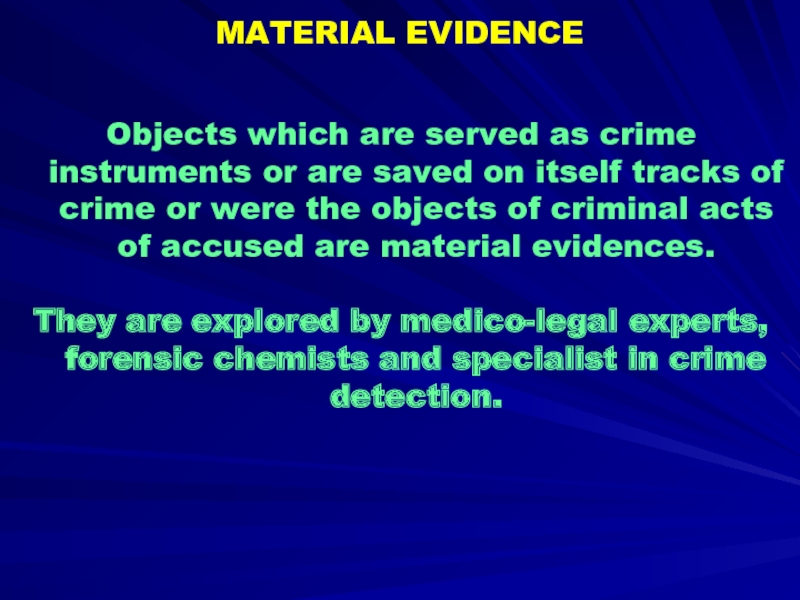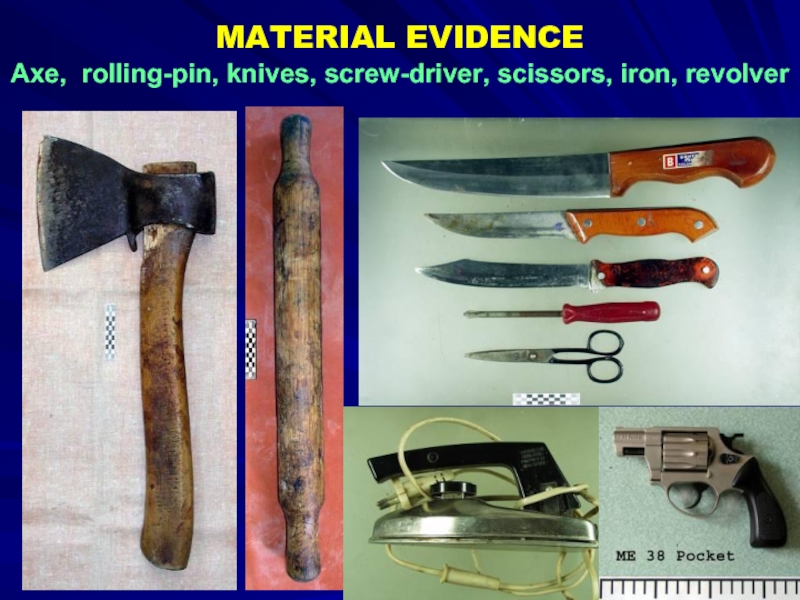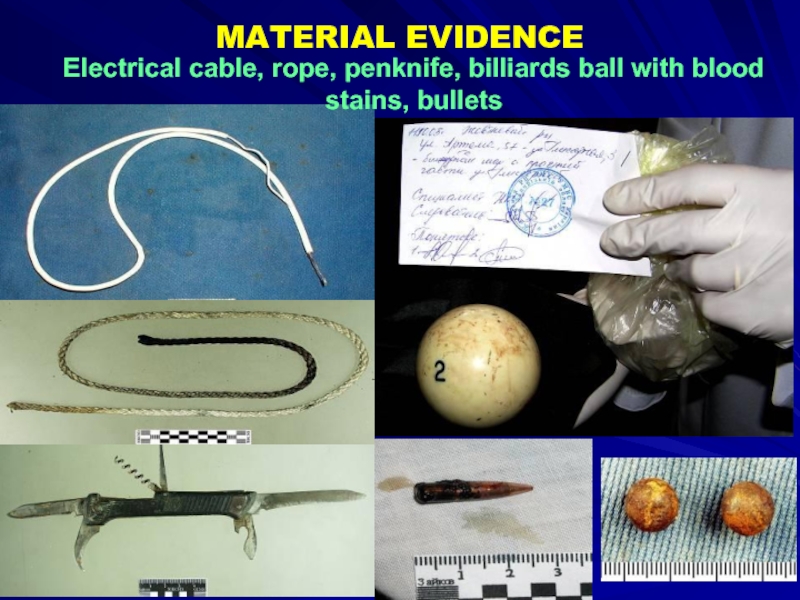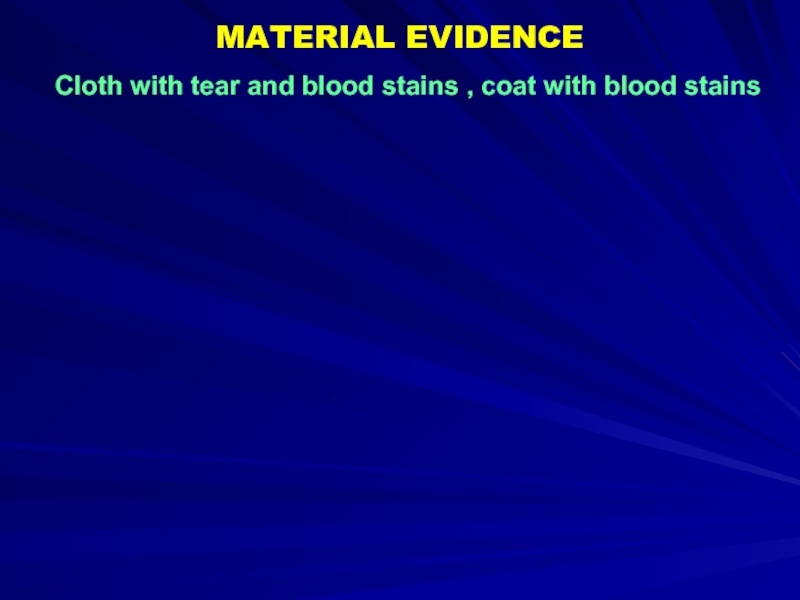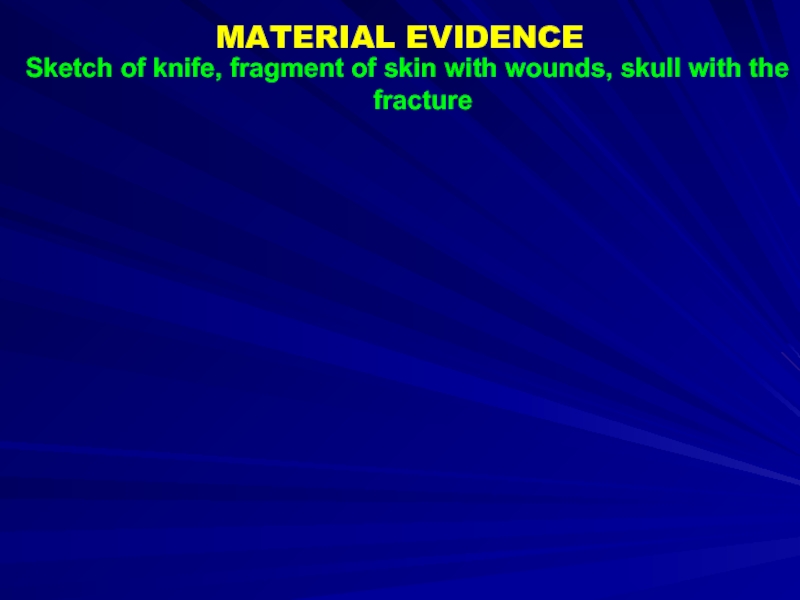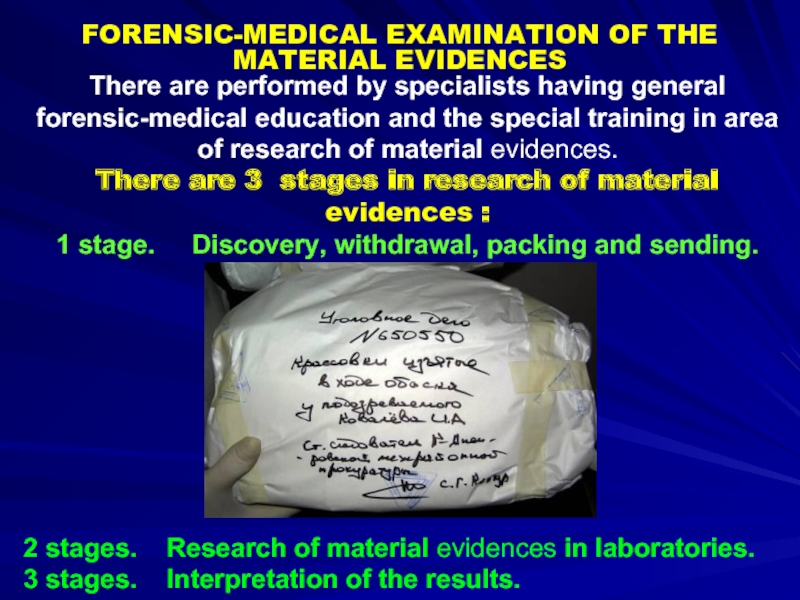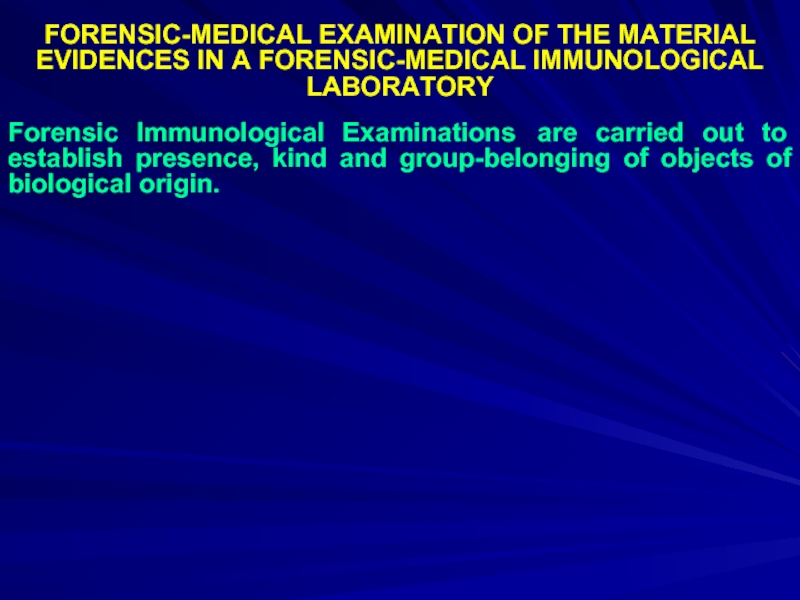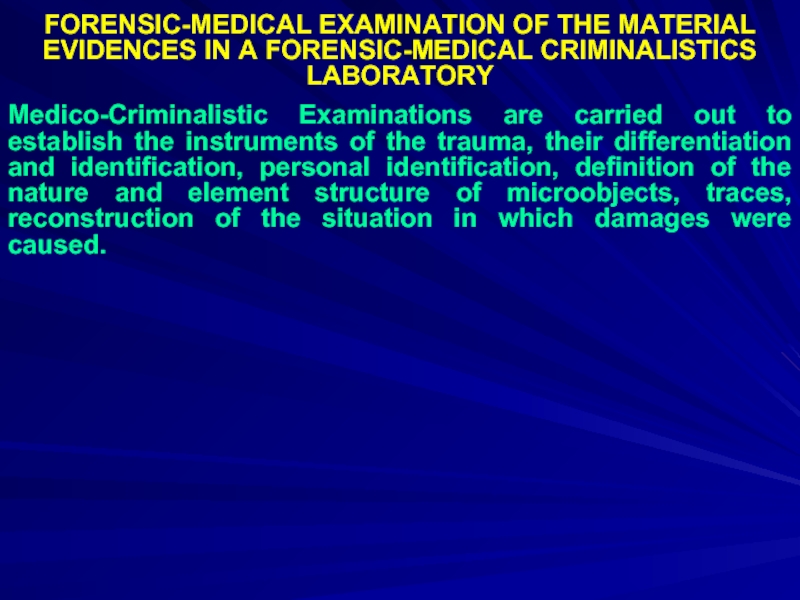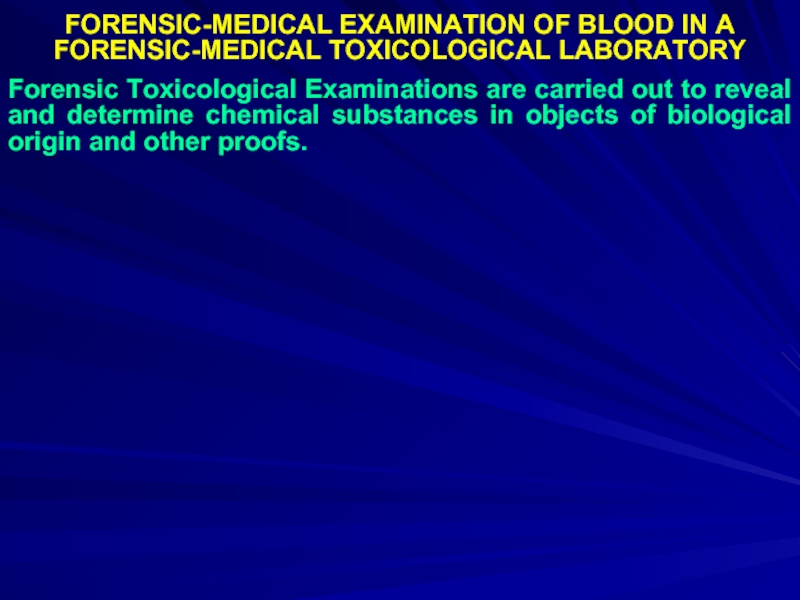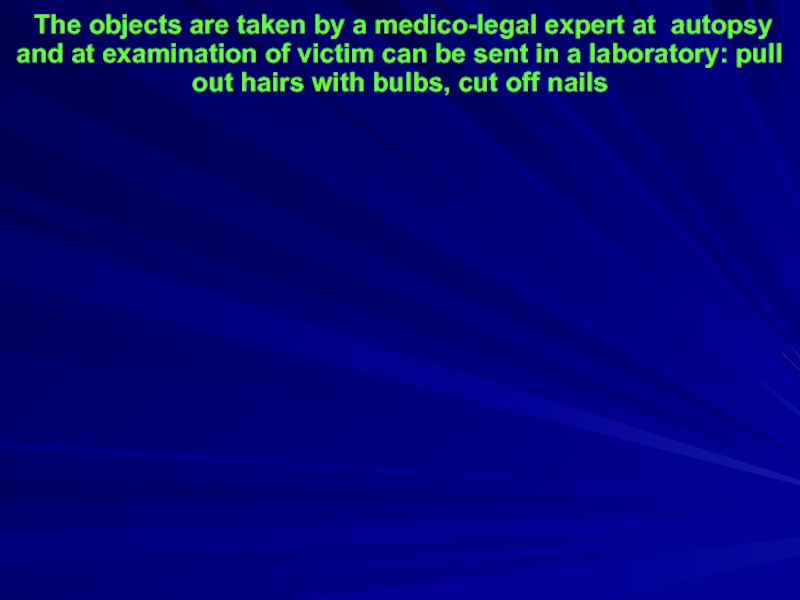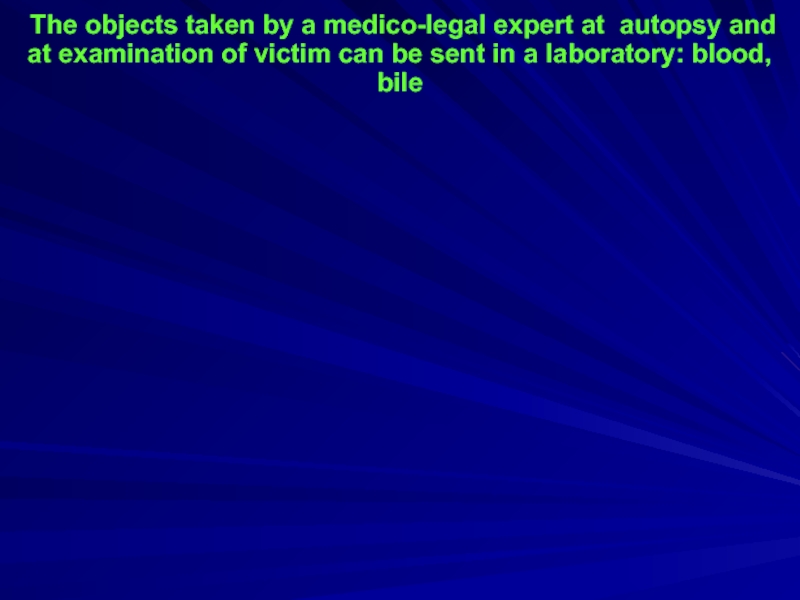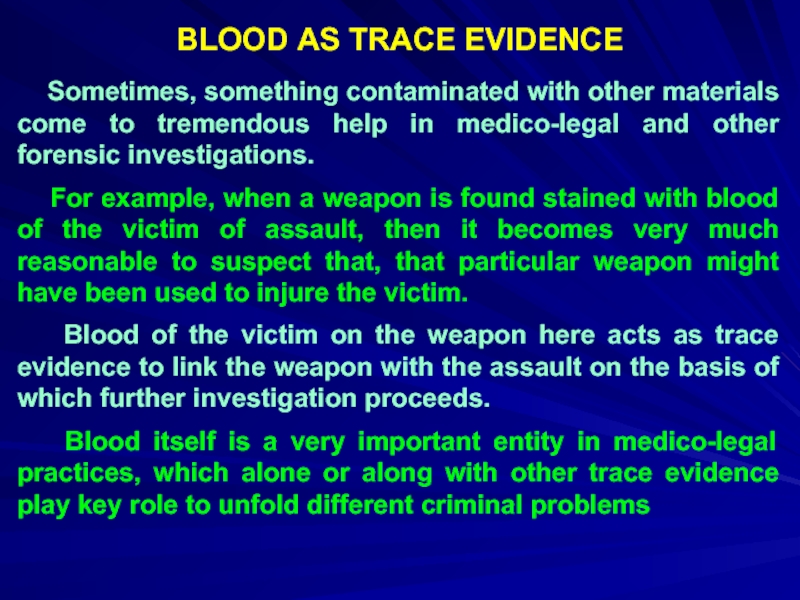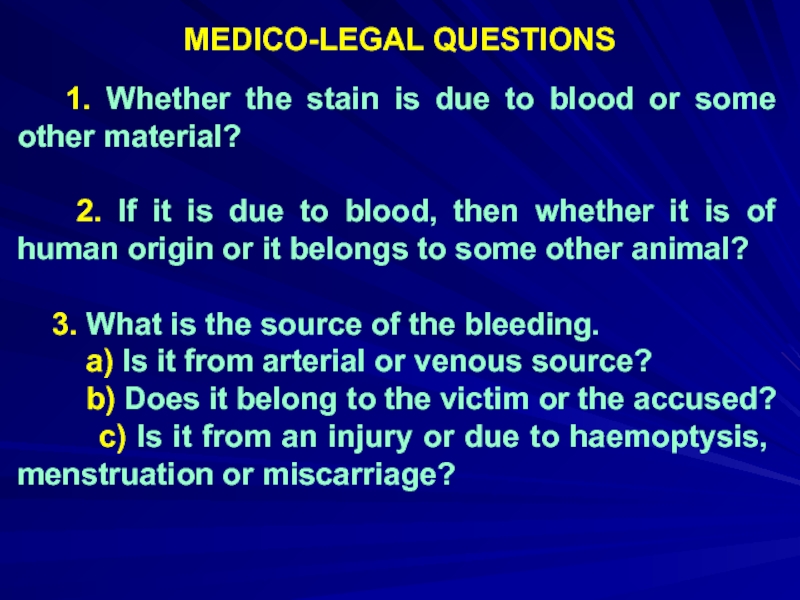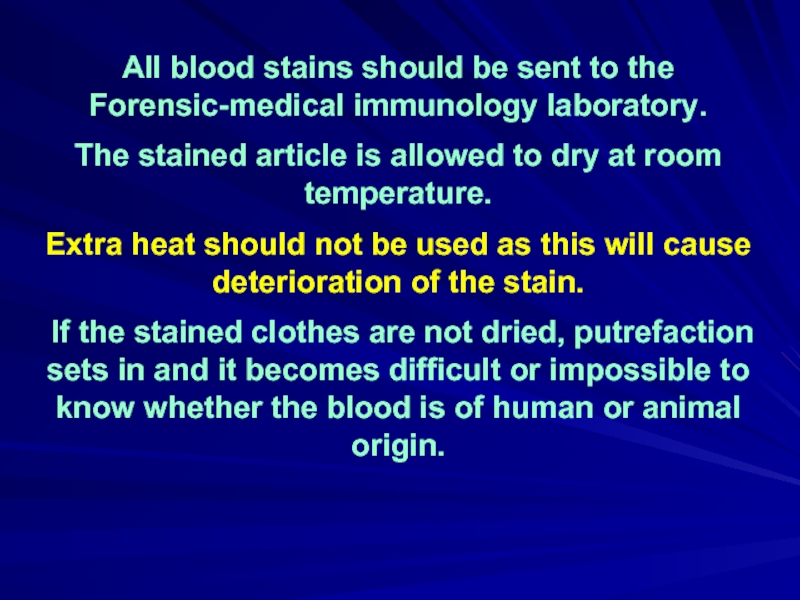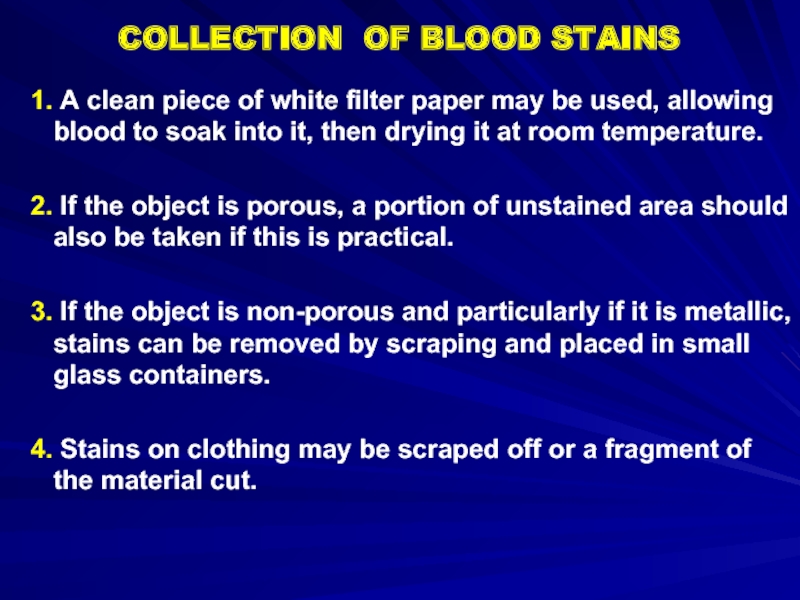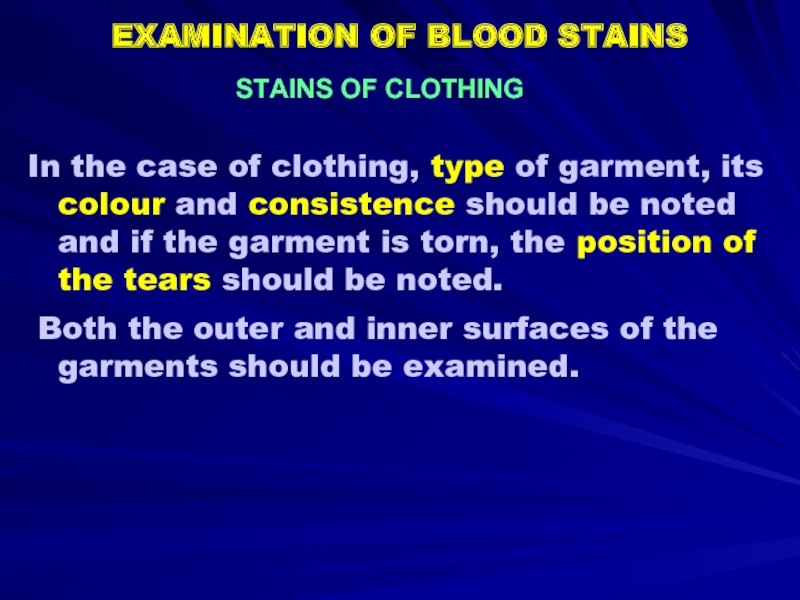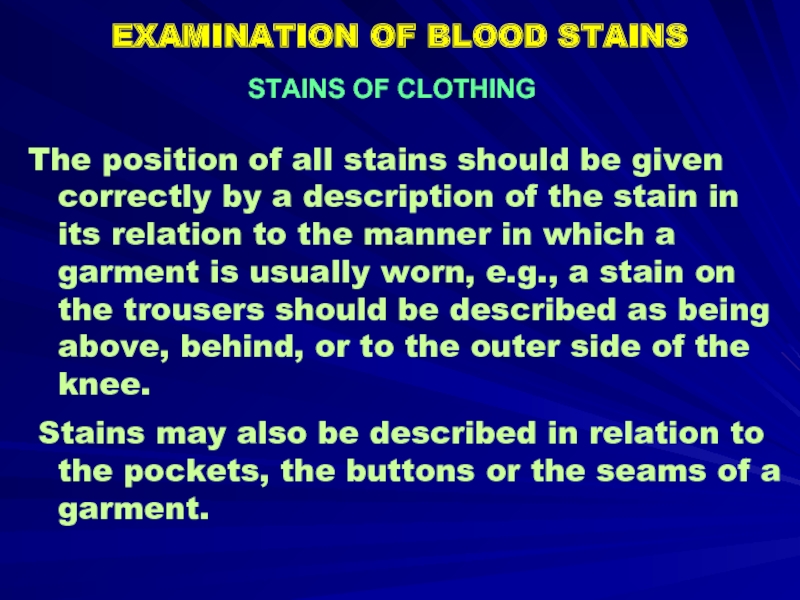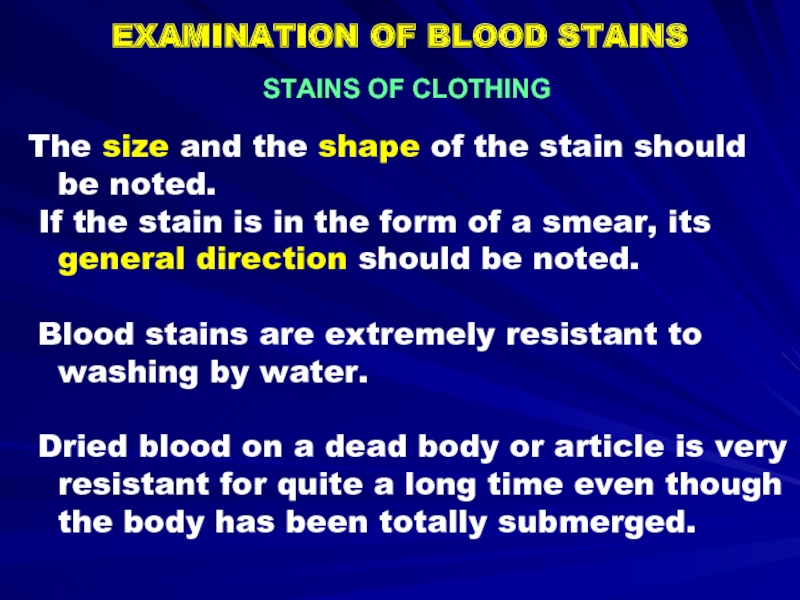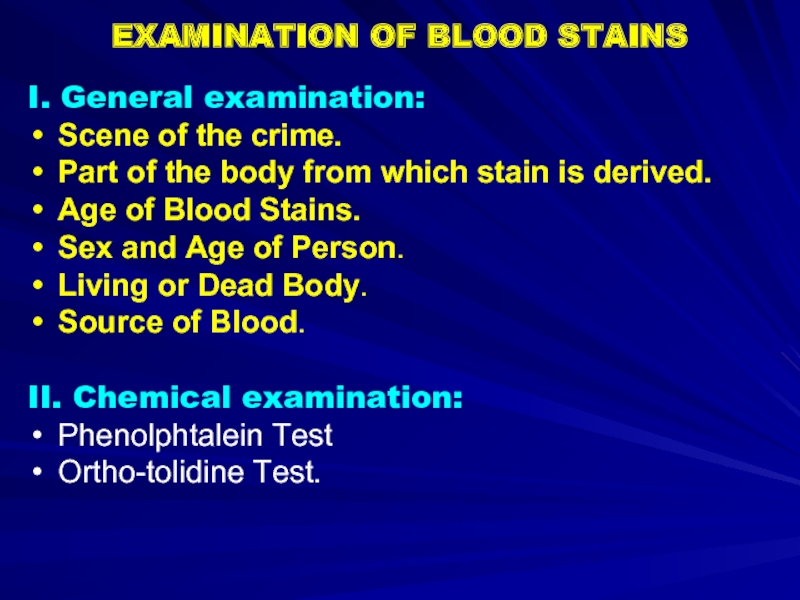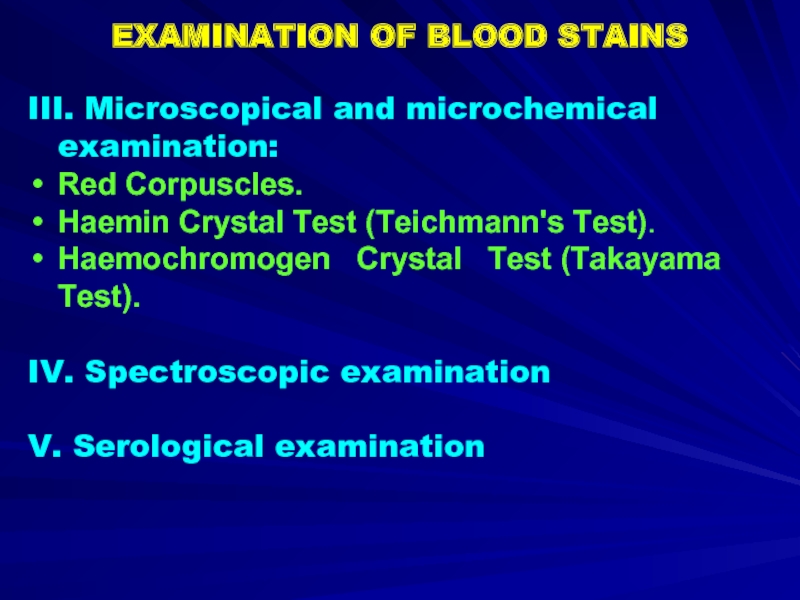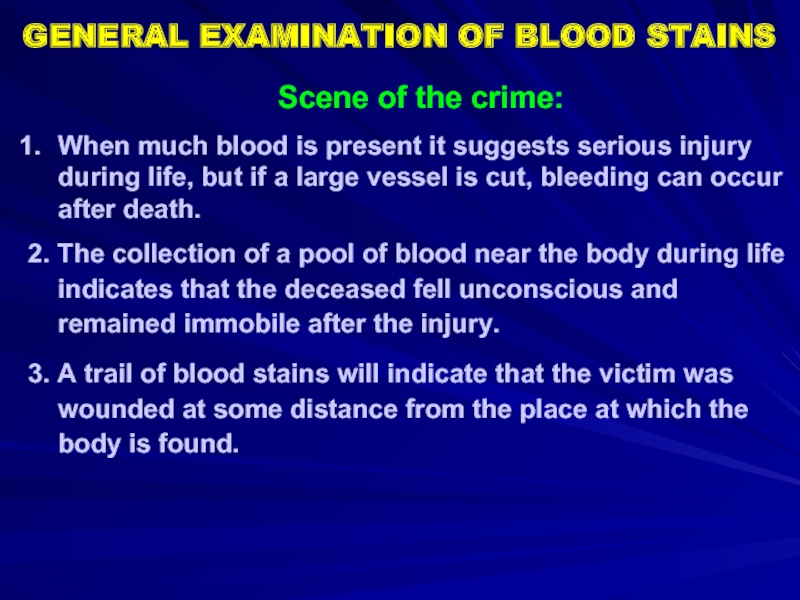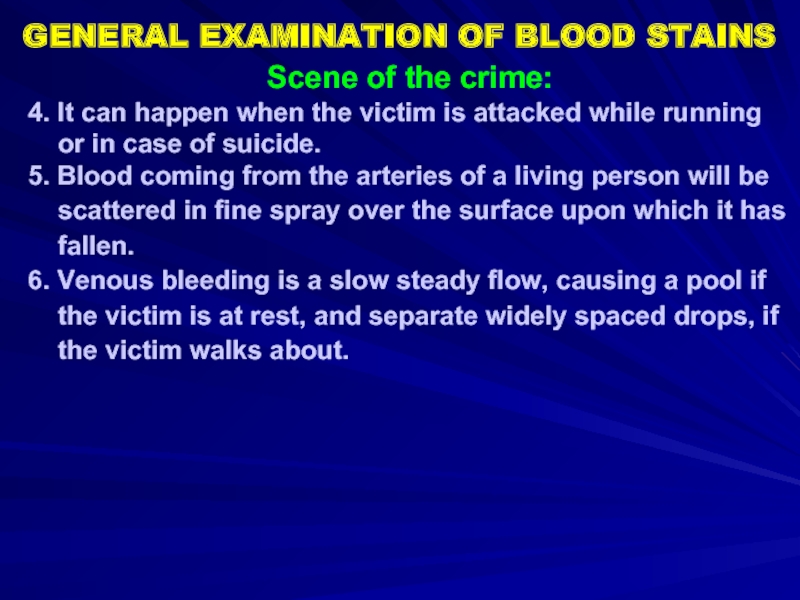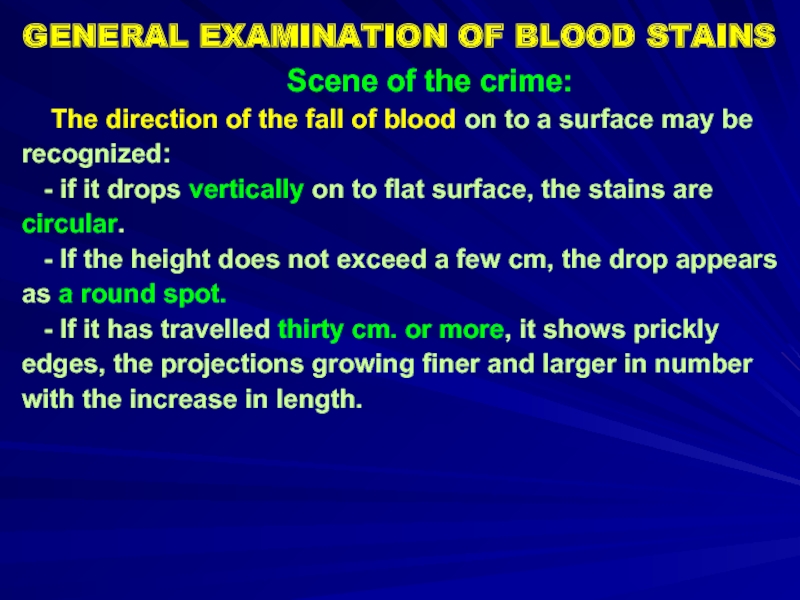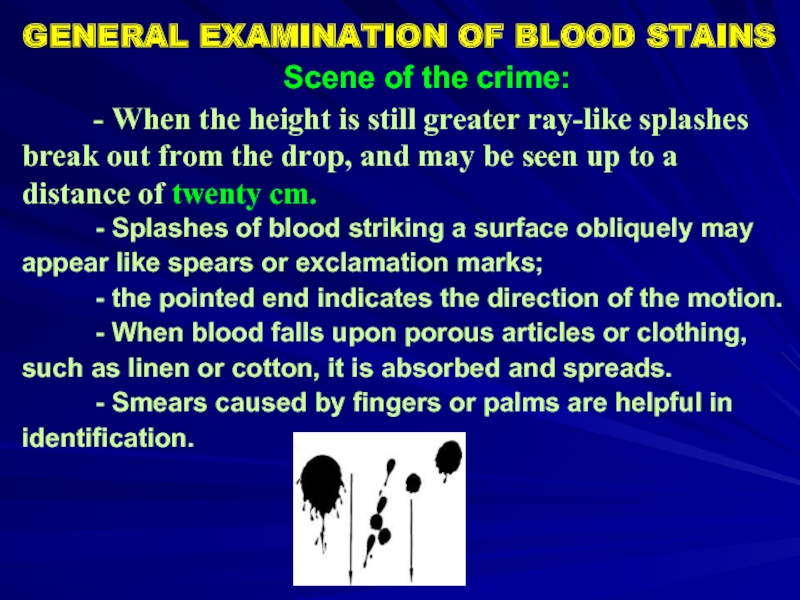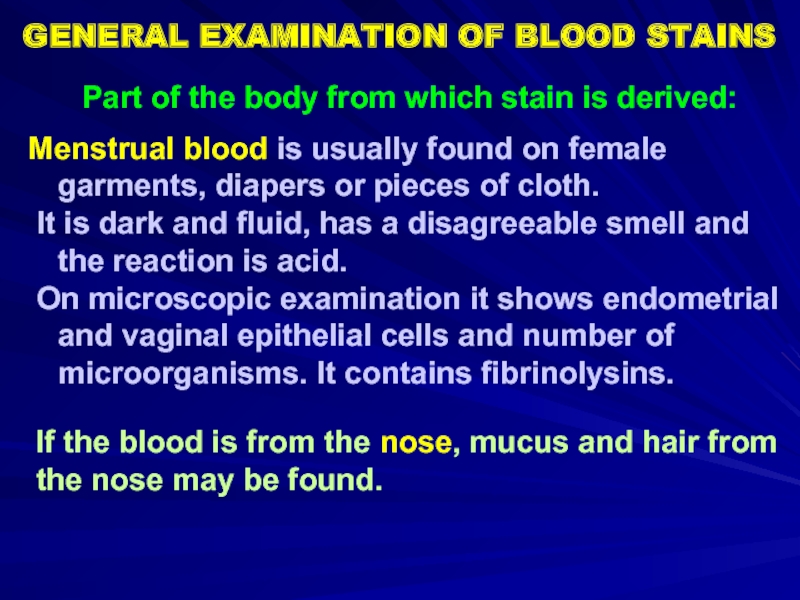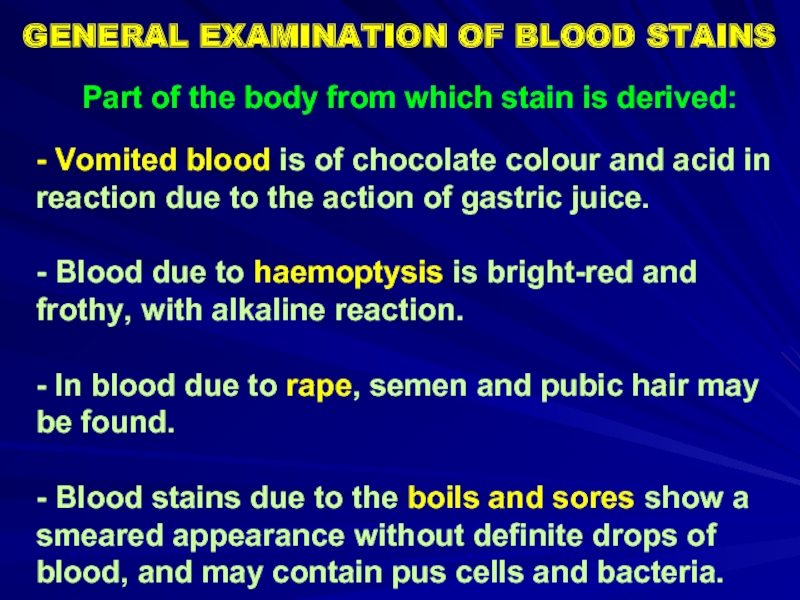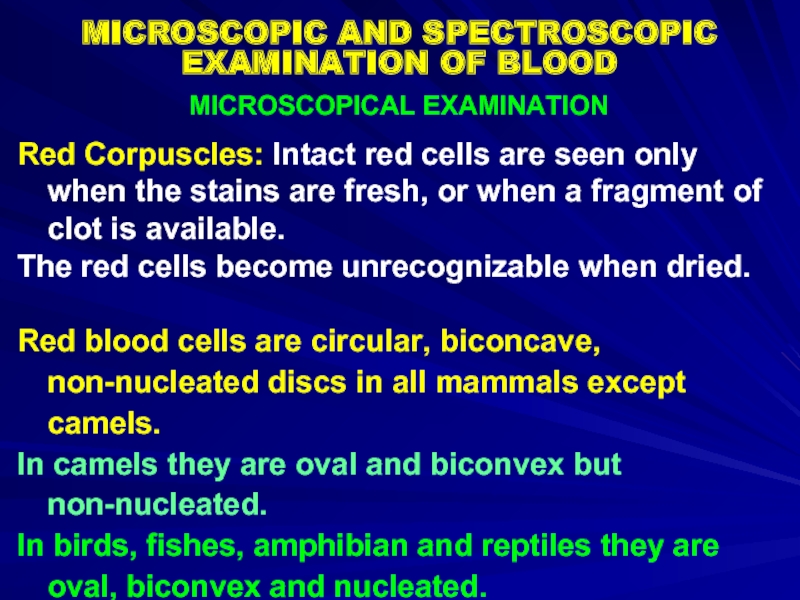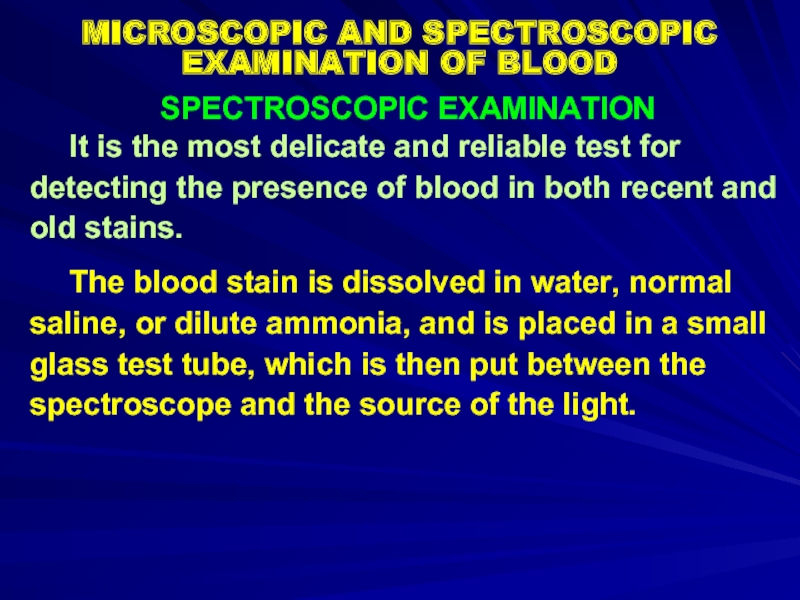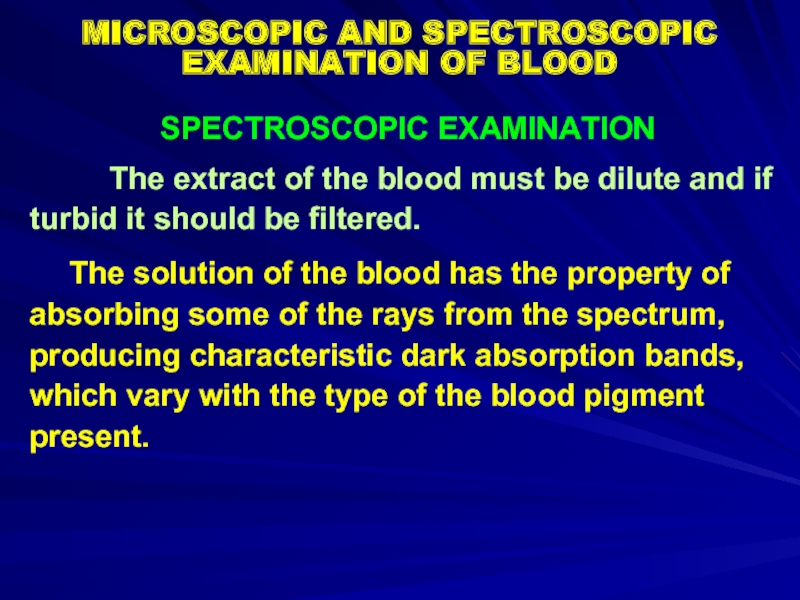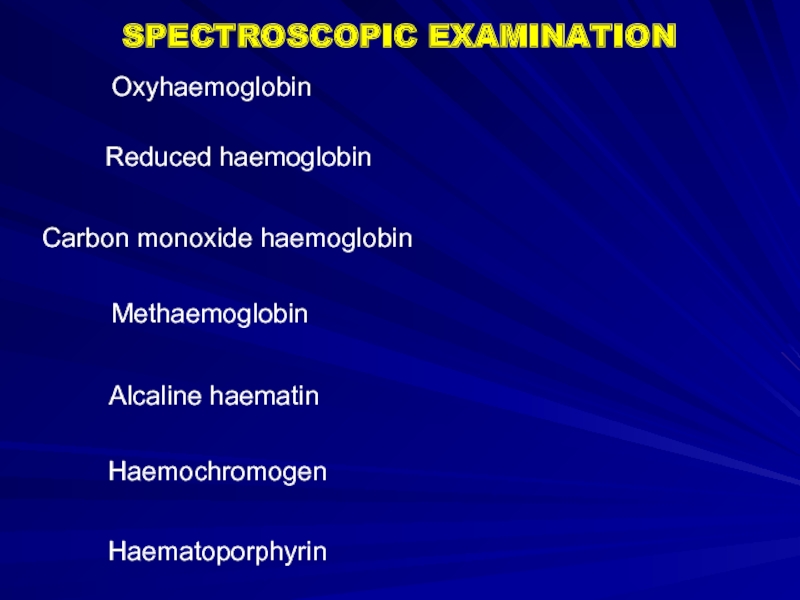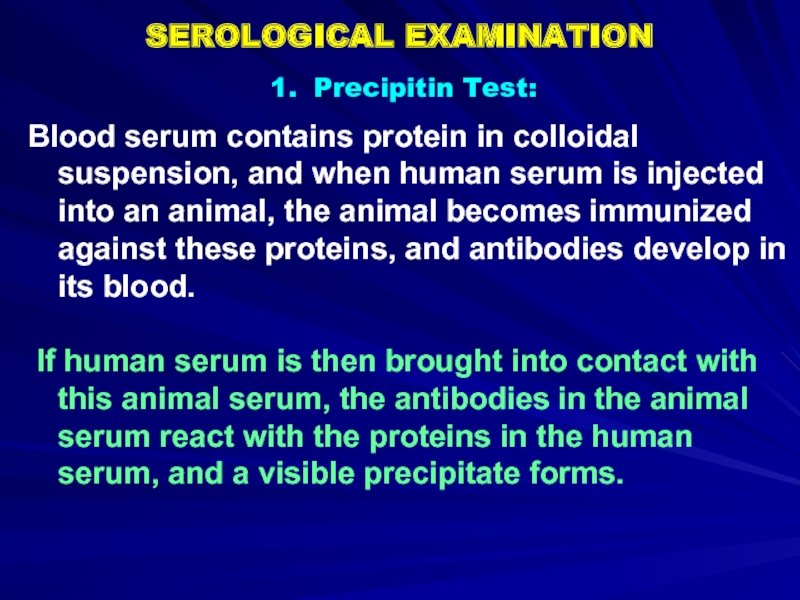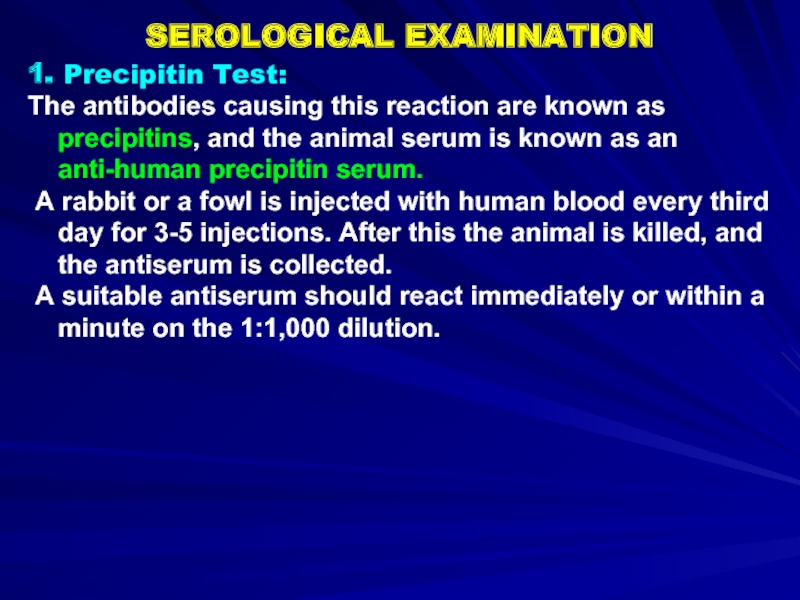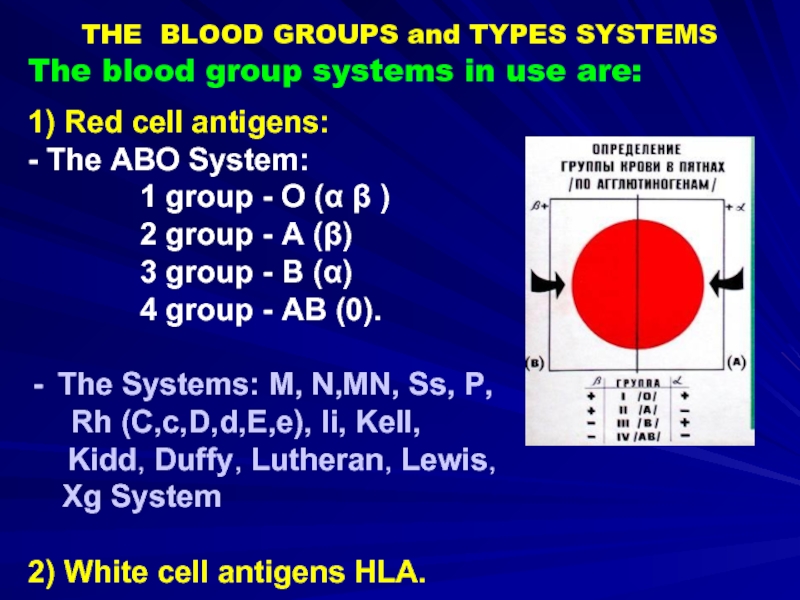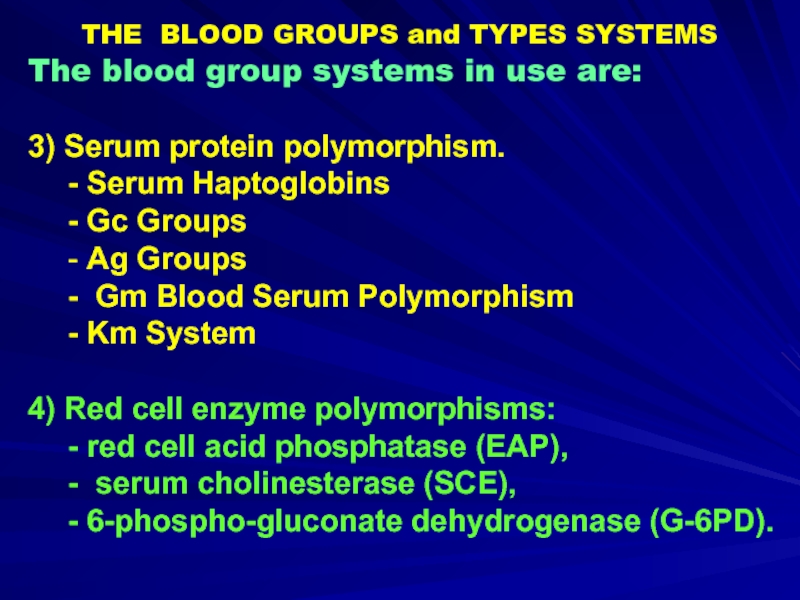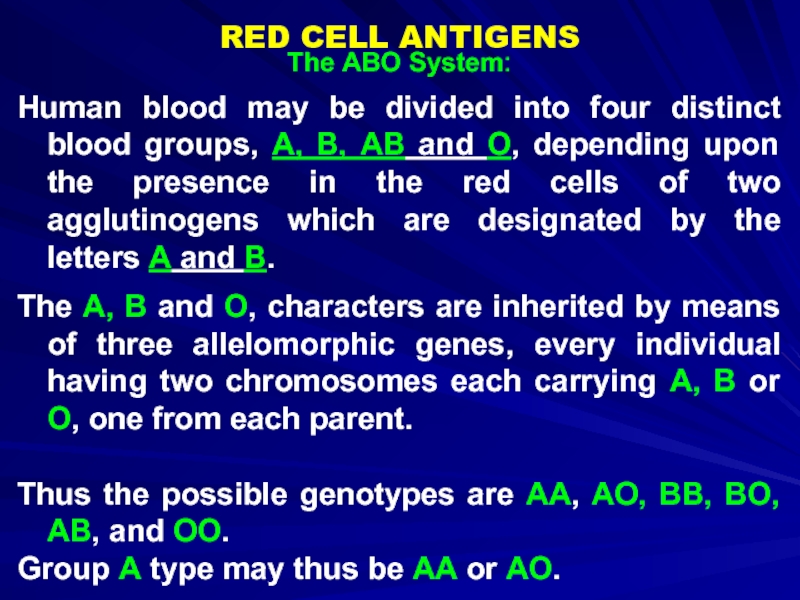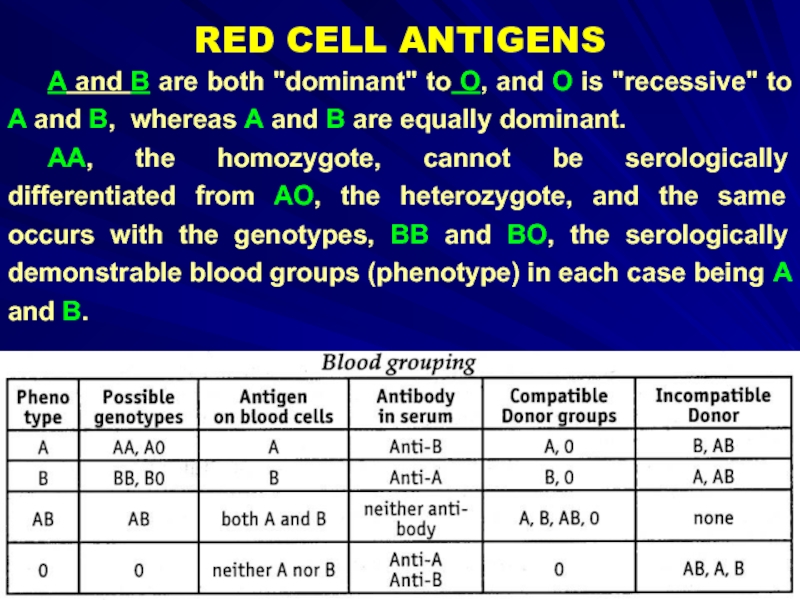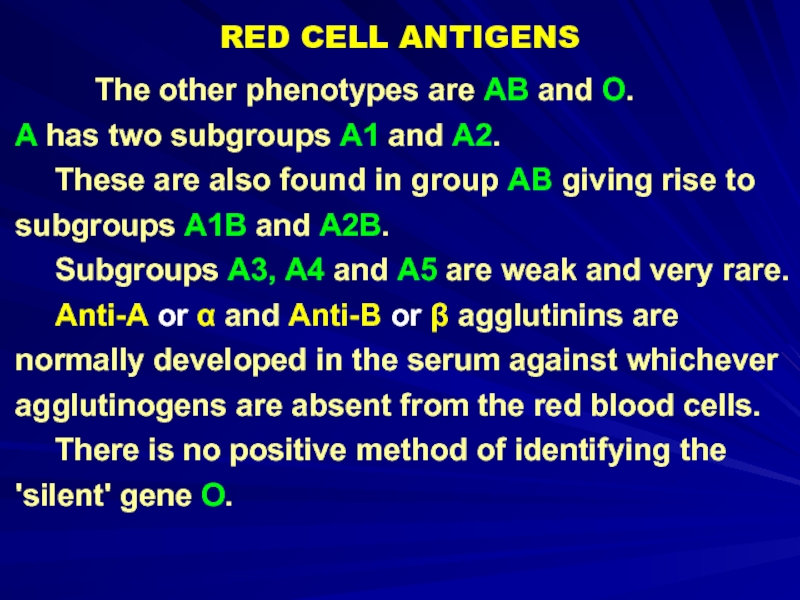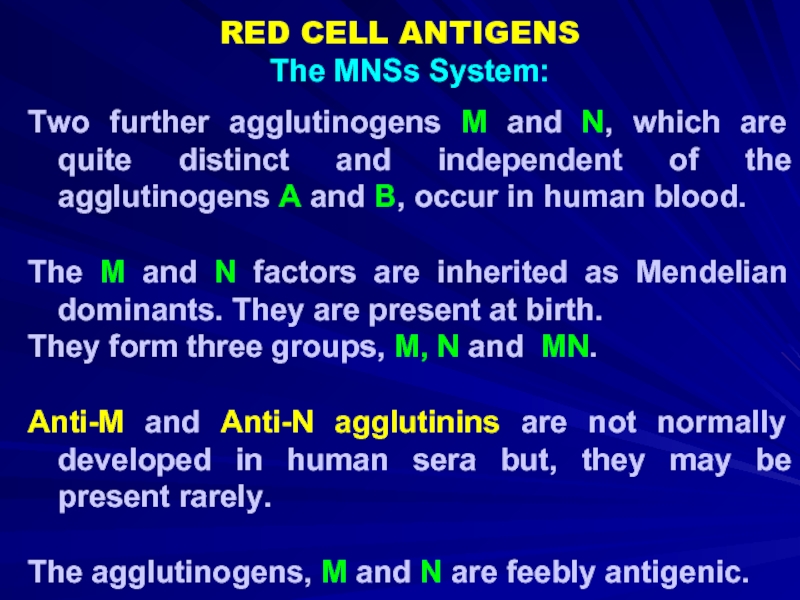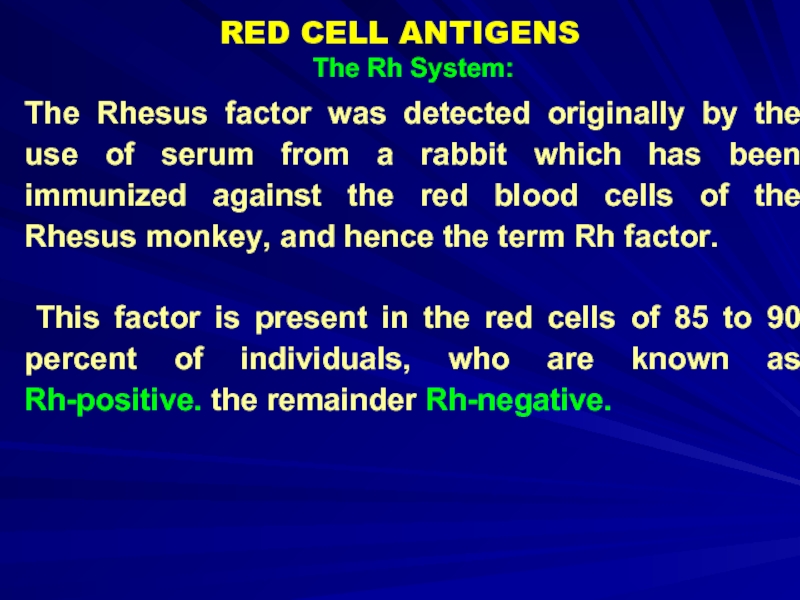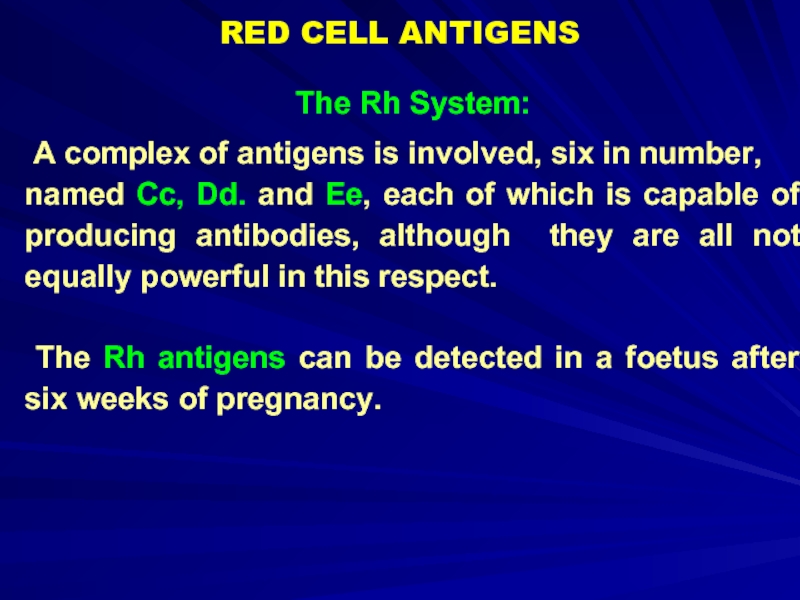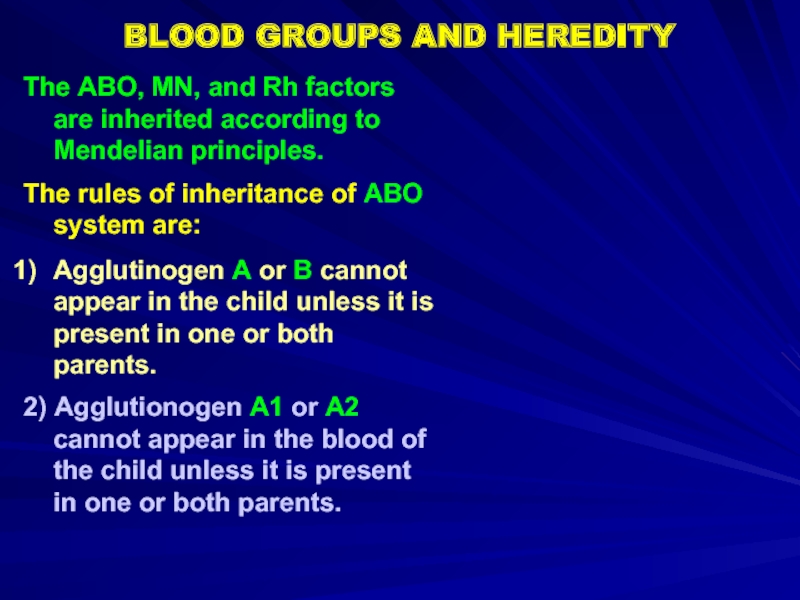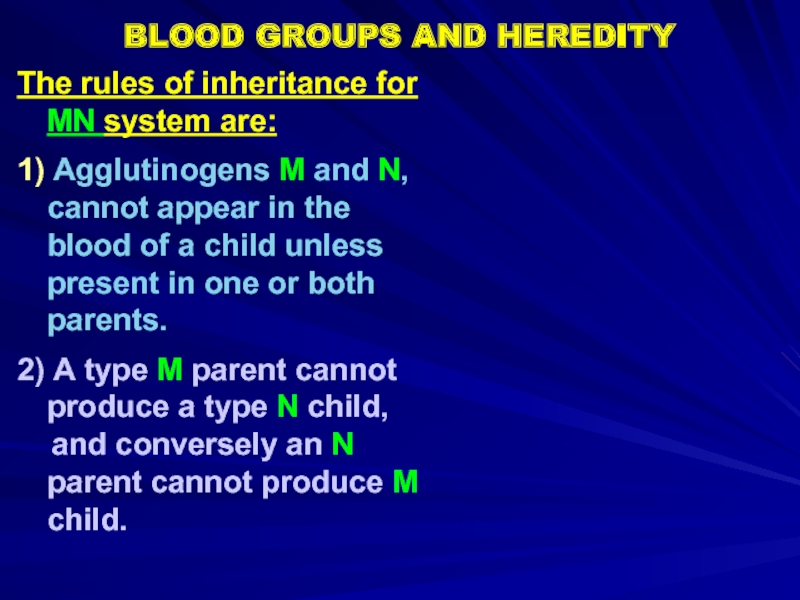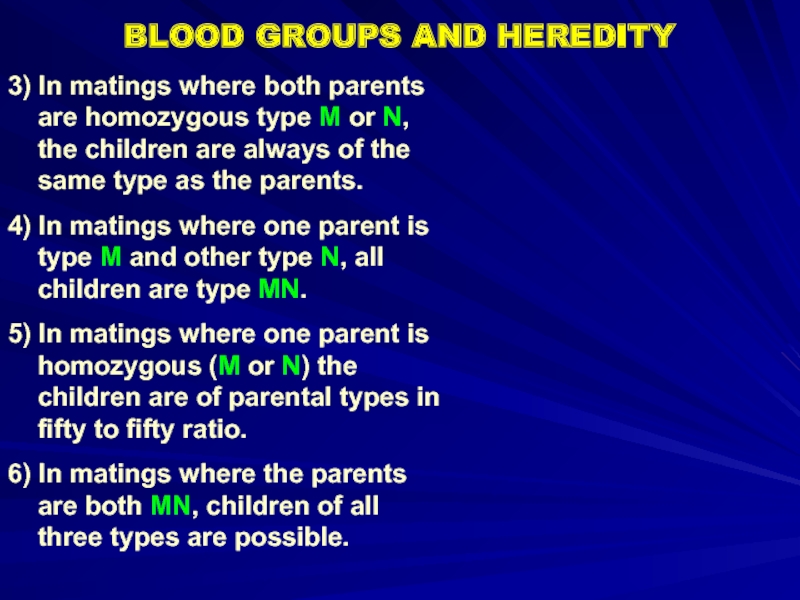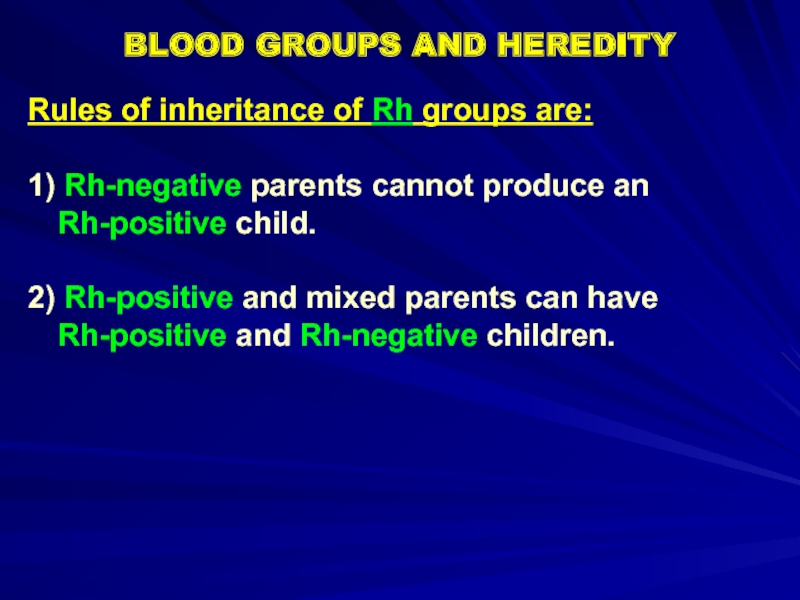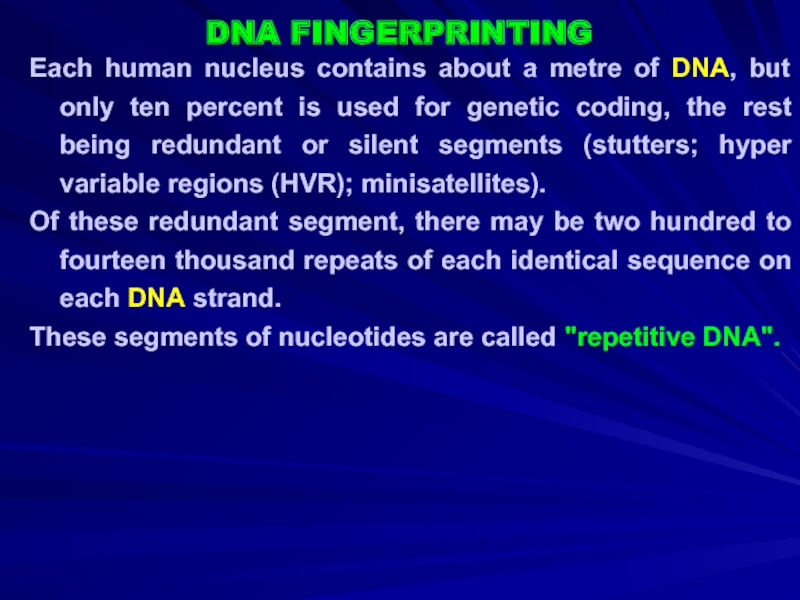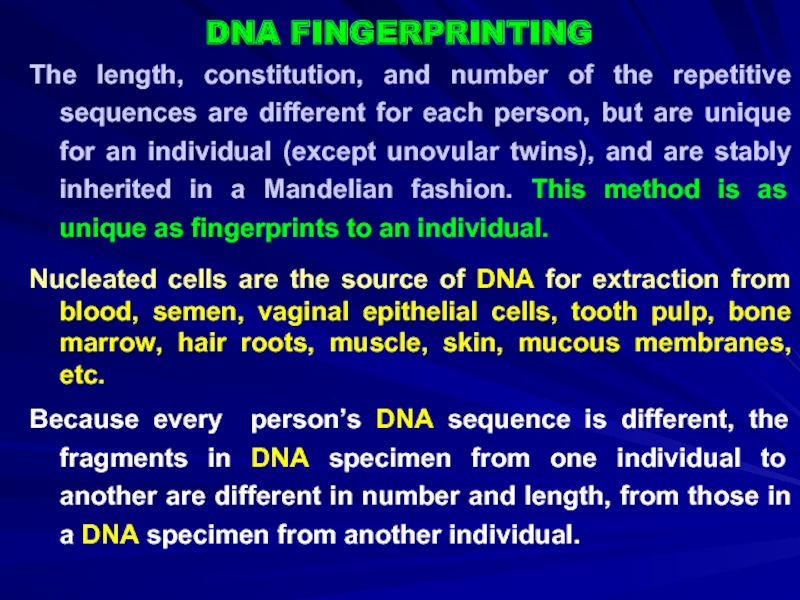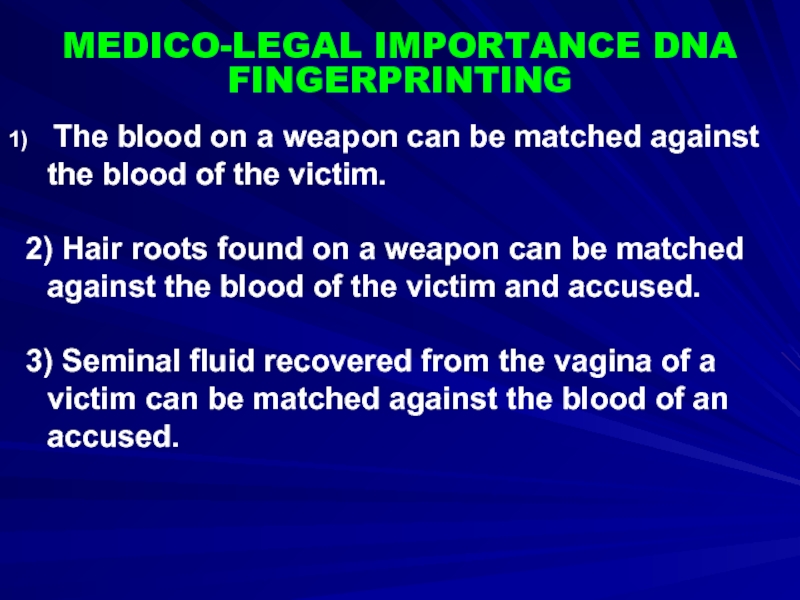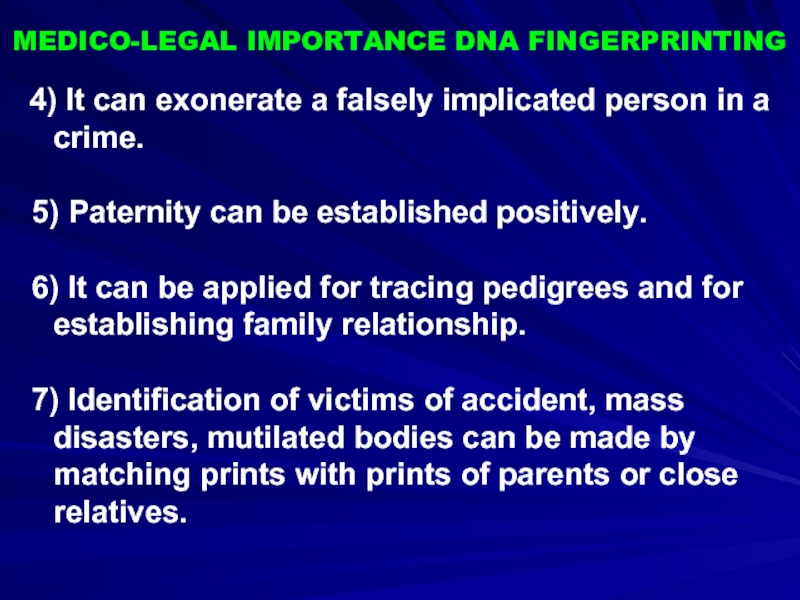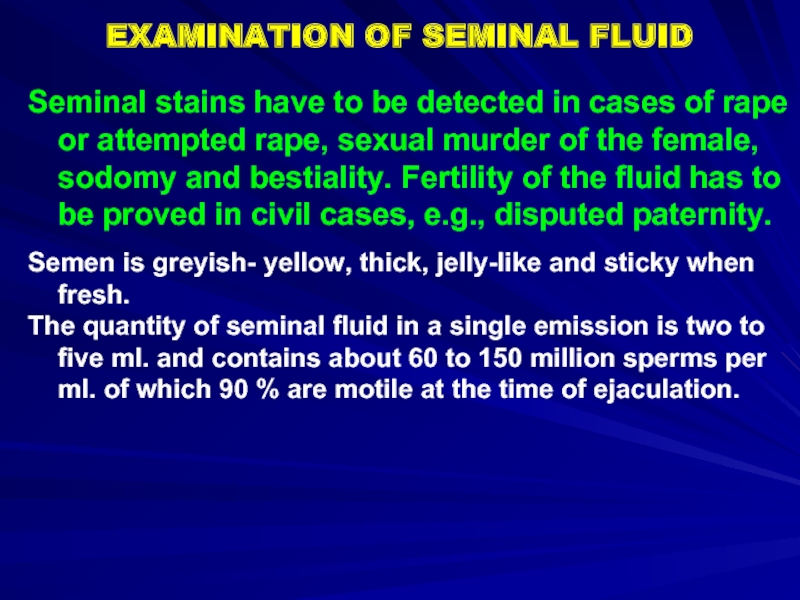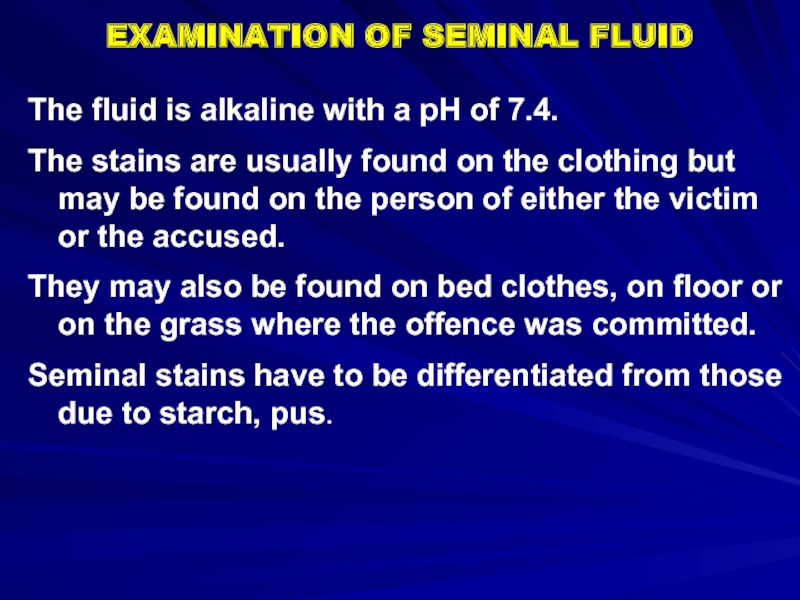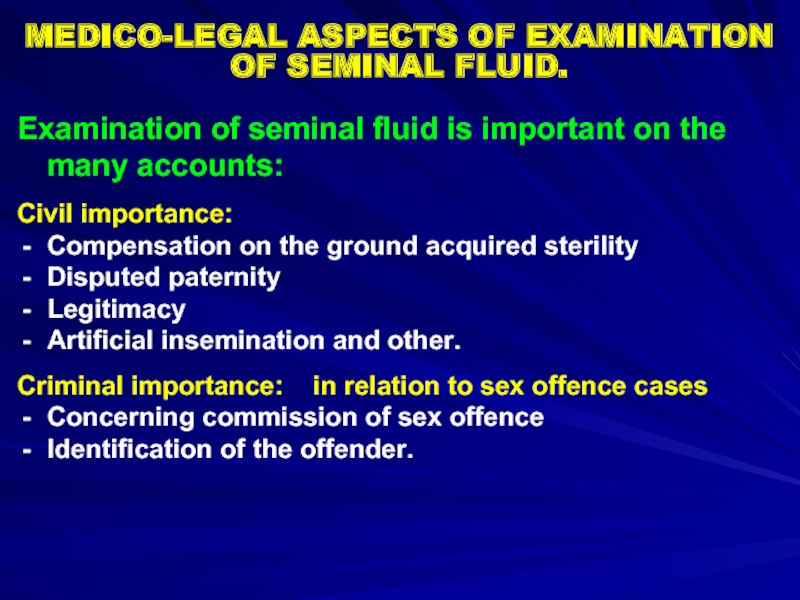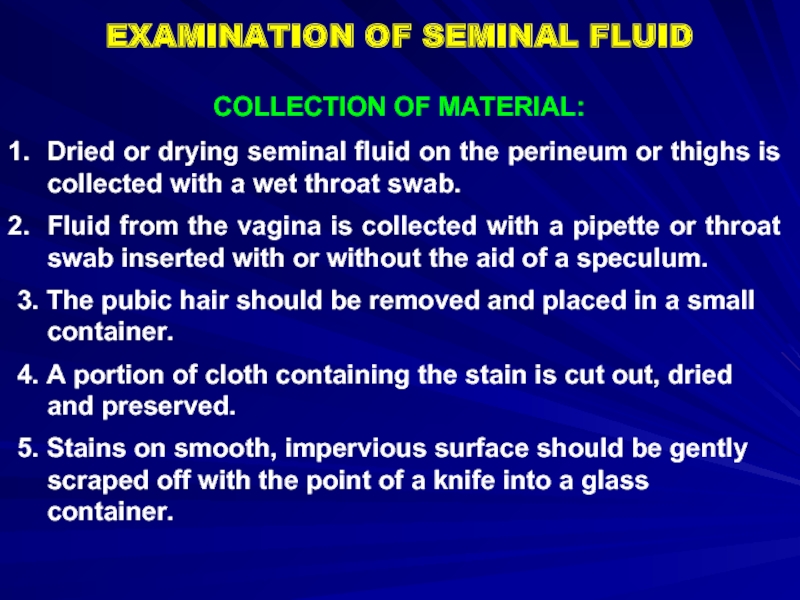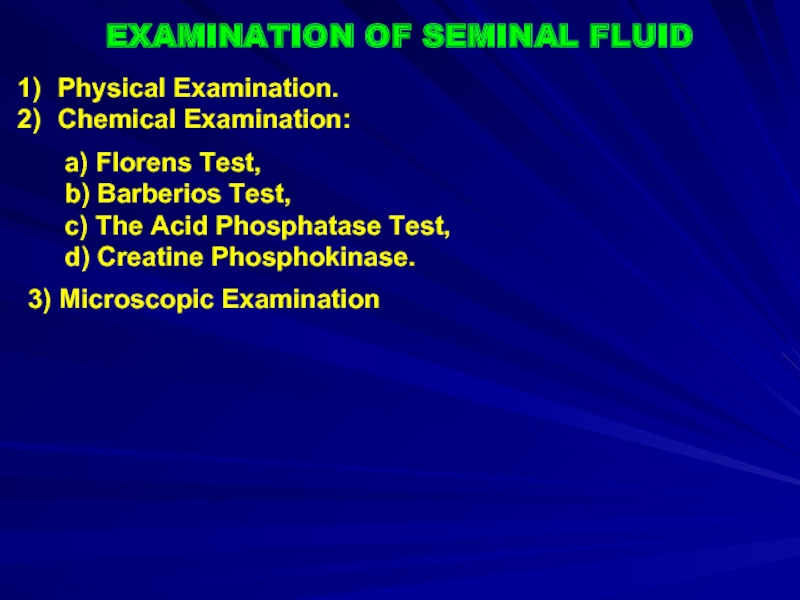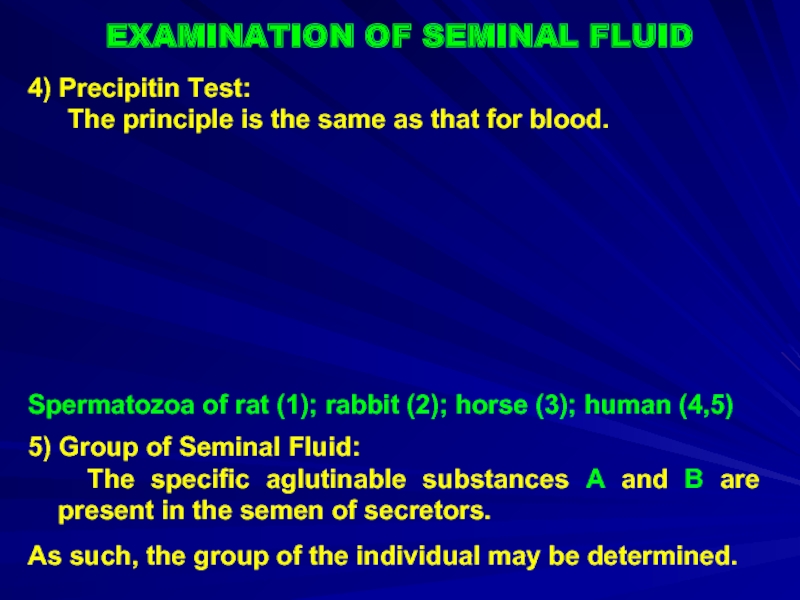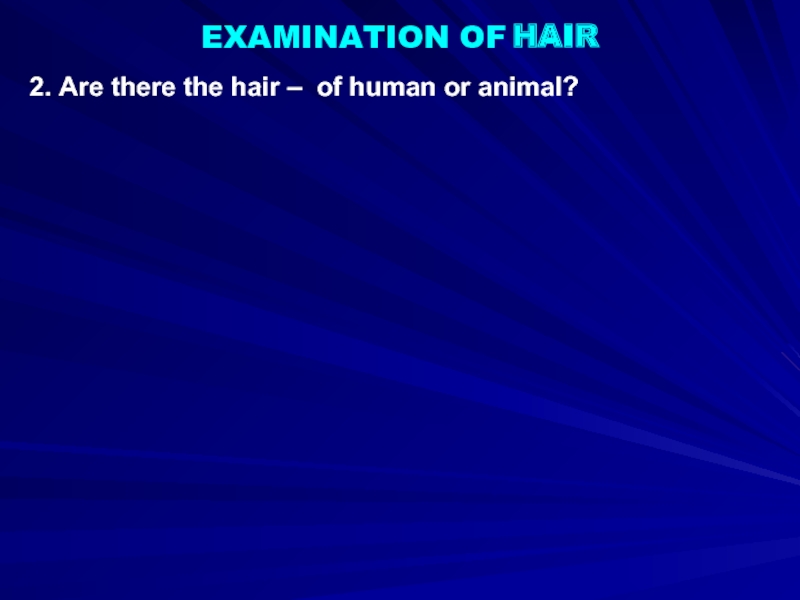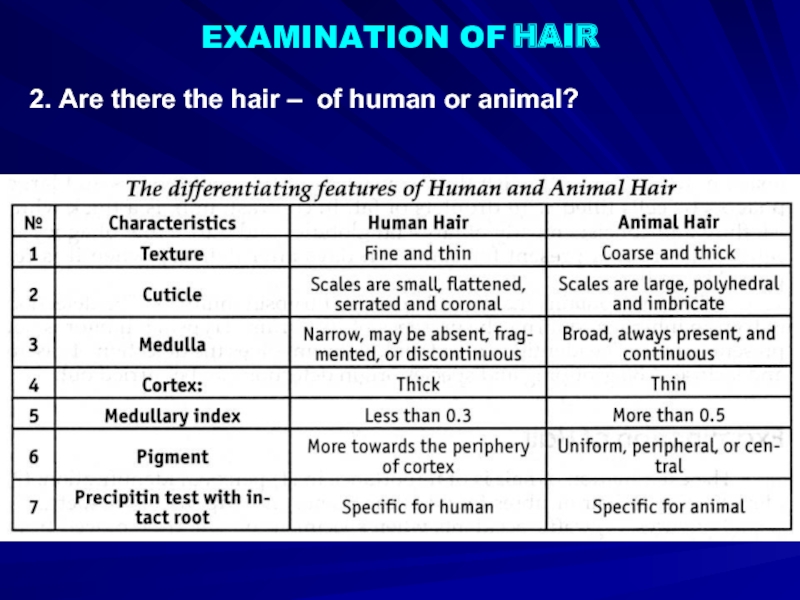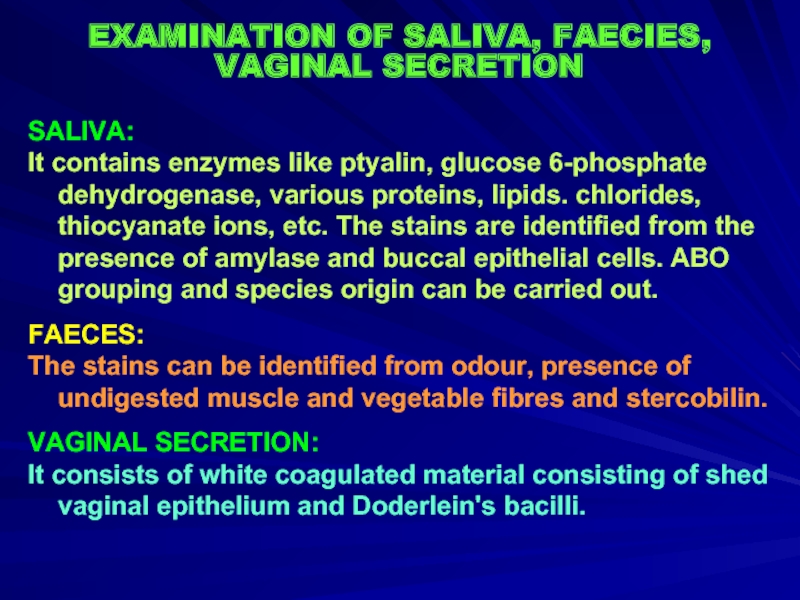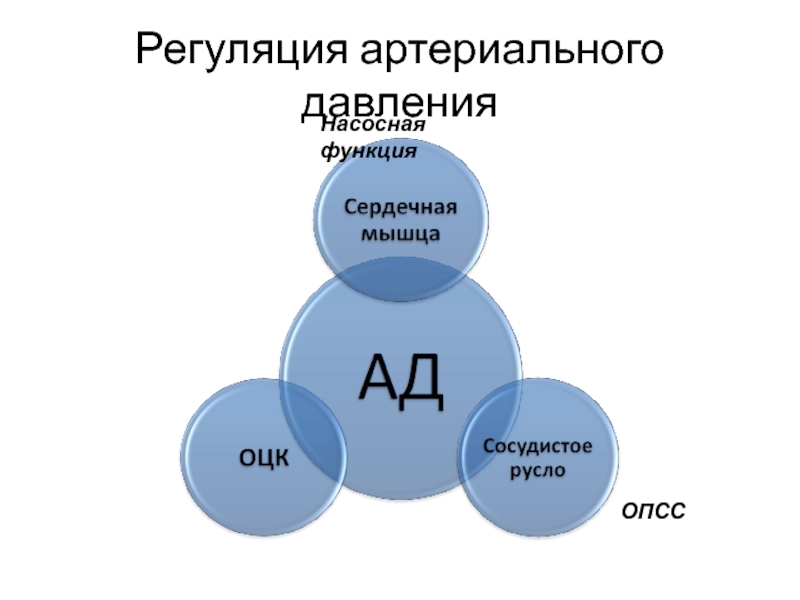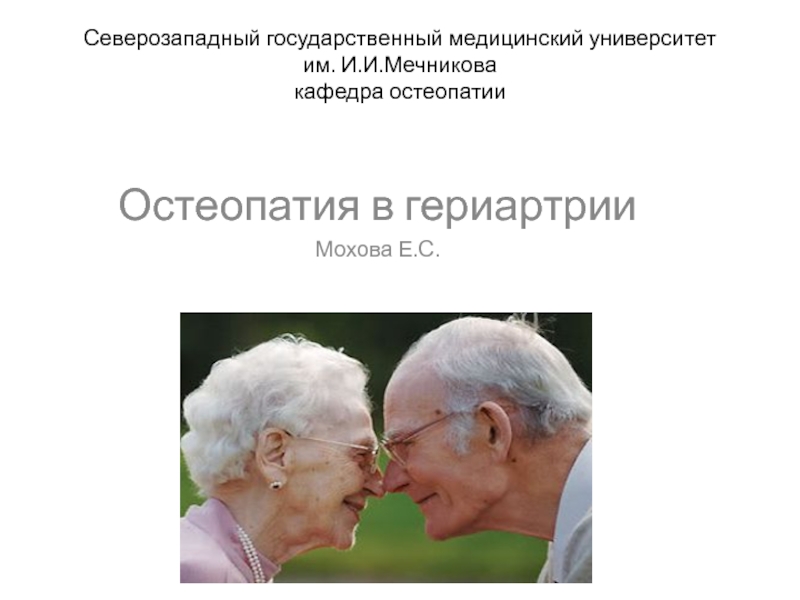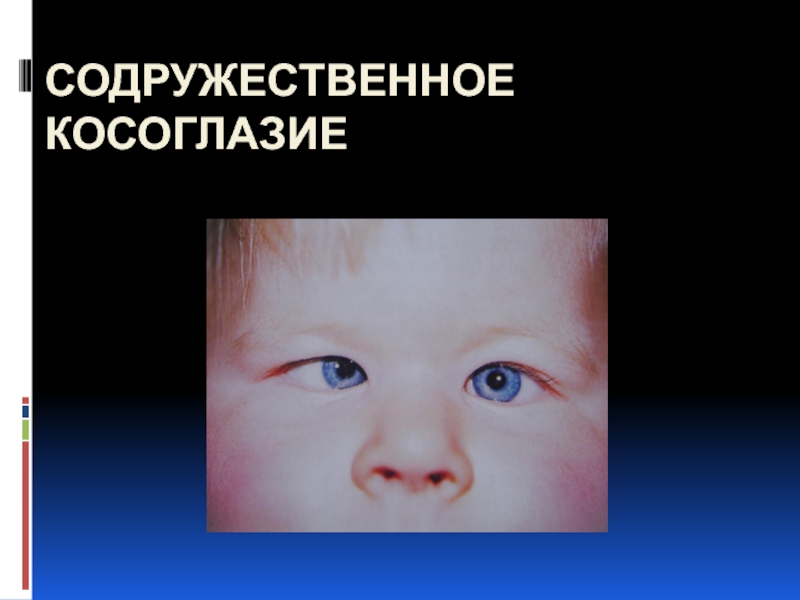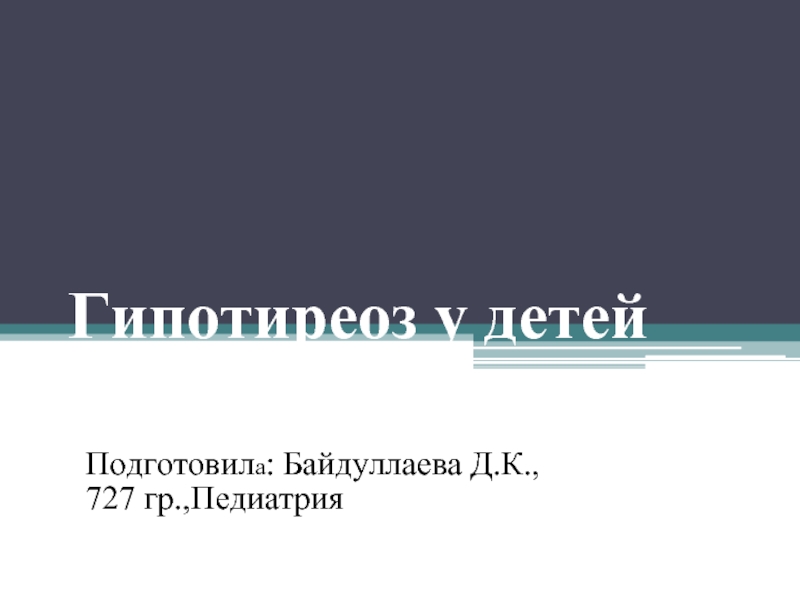FORENSIC-MEDICAL EXAMINATION MATERIAL EVIDENCE
- Главная
- Разное
- Дизайн
- Бизнес и предпринимательство
- Аналитика
- Образование
- Развлечения
- Красота и здоровье
- Финансы
- Государство
- Путешествия
- Спорт
- Недвижимость
- Армия
- Графика
- Культурология
- Еда и кулинария
- Лингвистика
- Английский язык
- Астрономия
- Алгебра
- Биология
- География
- Детские презентации
- Информатика
- История
- Литература
- Маркетинг
- Математика
- Медицина
- Менеджмент
- Музыка
- МХК
- Немецкий язык
- ОБЖ
- Обществознание
- Окружающий мир
- Педагогика
- Русский язык
- Технология
- Физика
- Философия
- Химия
- Шаблоны, картинки для презентаций
- Экология
- Экономика
- Юриспруденция
Forensic medicine презентация
Содержание
- 1. Forensic medicine
- 2. MATERIAL EVIDENCE Objects which are served as
- 3. MATERIAL EVIDENCE Axe, rolling-pin, knives, screw-driver, scissors, iron, revolver
- 4. MATERIAL EVIDENCE Electrical cable, rope, penknife, billiards ball with blood stains, bullets
- 5. MATERIAL EVIDENCE Cloth with tear and blood stains , coat with blood stains
- 6. MATERIAL EVIDENCE Sketch of knife, fragment of skin with wounds, skull with the fracture
- 7. FORENSIC-MEDICAL EXAMINATION OF THE MATERIAL EVIDENCES
- 8. FORENSIC-MEDICAL EXAMINATION OF THE MATERIAL EVIDENCES IN
- 9. FORENSIC-MEDICAL EXAMINATION OF THE MATERIAL EVIDENCES IN
- 10. FORENSIC-MEDICAL EXAMINATION OF BLOOD IN A
- 11. The objects are taken by a
- 12. The objects taken by a medico-legal
- 13. INVESTIGATION OF THE SCENE OF CRIME (BLLOD STAINS ON THE FLOOR AND WALL)
- 14. Sometimes, something contaminated
- 15. 1. Whether the
- 17. All blood stains should be
- 18. COLLECTION OF BLOOD STAINS 1. A
- 19. COLLECTION OF BLOOD STAINS Taking of blood on gauze, example of clean gauze
- 20. EXAMINATION OF BLOOD STAINS In the case
- 21. EXAMINATION OF BLOOD STAINS The position of
- 22. EXAMINATION OF BLOOD STAINS The size and
- 23. EXAMINATION OF BLOOD STAINS I. General examination:
- 24. EXAMINATION OF BLOOD STAINS III. Microscopical
- 25. GENERAL EXAMINATION OF BLOOD STAINS
- 26. GENERAL EXAMINATION OF BLOOD STAINS Scene of
- 27. GENERAL EXAMINATION OF BLOOD STAINS Scene
- 28. GENERAL EXAMINATION OF BLOOD STAINS Scene of
- 29. GENERAL EXAMINATION OF BLOOD STAINS Part of
- 30. GENERAL EXAMINATION OF BLOOD STAINS Part of
- 31. MICROSCOPIC AND SPECTROSCOPIC EXAMINATION OF BLOOD MICROSCOPICAL
- 32. MICROSCOPIC AND SPECTROSCOPIC EXAMINATION OF BLOOD SPECTROSCOPIC
- 33. MICROSCOPIC AND SPECTROSCOPIC EXAMINATION OF BLOOD SPECTROSCOPIC
- 34. SPECTROSCOPIC EXAMINATION Oxyhaemoglobin Reduced haemoglobin Carbon monoxide haemoglobin Methaemoglobin Alcaline haematin Haemochromogen Haematoporphyrin
- 35. SEROLOGICAL EXAMINATION Precipitin Test: Blood serum
- 36. SEROLOGICAL EXAMINATION 1. Precipitin Test: The antibodies
- 37. THE BLOOD GROUPS and TYPES SYSTEMS The
- 38. THE BLOOD GROUPS and TYPES SYSTEMS The
- 39. RED CELL ANTIGENS The ABO System:
- 40. RED CELL ANTIGENS A and В are
- 41. RED CELL ANTIGENS The other phenotypes are
- 42. RED CELL ANTIGENS The MNSs System:
- 43. RED CELL ANTIGENS The Rh System:
- 44. RED CELL ANTIGENS The Rh System:
- 45. BLOOD GROUPS AND HEREDITY The ABO, MN,
- 46. BLOOD GROUPS AND HEREDITY 3) The combination
- 47. BLOOD GROUPS AND HEREDITY The rules of
- 48. BLOOD GROUPS AND HEREDITY 3) In
- 49. BLOOD GROUPS AND HEREDITY Rules of inheritance
- 50. DNA FINGERPRINTING Each human nucleus contains about
- 51. DNA FINGERPRINTING The length, constitution, and number
- 52. MEDICO-LEGAL IMPORTANCE DNA FINGERPRINTING The blood
- 53. MEDICO-LEGAL IMPORTANCE DNA FINGERPRINTING 4) It
- 54. EXAMINATION OF SEMINAL FLUID Seminal stains have
- 55. EXAMINATION OF SEMINAL FLUID The fluid is
- 56. MEDICO-LEGAL ASPECTS OF EXAMINATION OF SEMINAL FLUID.
- 57. EXAMINATION OF SEMINAL FLUID COLLECTION OF
- 58. EXAMINATION OF SEMINAL FLUID Physical Examination.
- 59. EXAMINATION OF SEMINAL FLUID 4) Precipitin
- 60. EXAMINATION OF HAIR Questions are decided: Are there the hair?
- 61. 2. Are there the hair – of human or animal? EXAMINATION OF HAIR
- 62. 2. Are there the hair – of human or animal? EXAMINATION OF HAIR
- 63. 3. What region of body is a
- 64. 4. Did hair pull out or did
- 65. EXAMINATION OF SALIVA, FAECIES, VAGINAL SECRETION SALIVA:
Слайд 1
ZAPOROZHIAL STATE MEDICAL UNIVERSITY
THE DEPARTMENT OF PATHOLOGICAL ANATOMY and FORENSIC MEDICINE
lecture
Слайд 2MATERIAL EVIDENCE
Objects which are served as crime instruments or are saved
They are explored by medico-legal experts, forensic chemists and specialist in crime detection.
Слайд 4MATERIAL EVIDENCE
Electrical cable, rope, penknife, billiards ball with blood stains,
Слайд 7FORENSIC-MEDICAL EXAMINATION OF THE MATERIAL EVIDENCES
There are performed by specialists having
There are 3 stages in research of material evidences :
1 stage. Discovery, withdrawal, packing and sending.
2 stages. Research of material evidences in laboratories.
3 stages. Interpretation of the results.
Слайд 8FORENSIC-MEDICAL EXAMINATION OF THE MATERIAL EVIDENCES IN A FORENSIC-MEDICAL IMMUNOLOGICAL LABORATORY
Forensic
Слайд 9FORENSIC-MEDICAL EXAMINATION OF THE MATERIAL EVIDENCES IN A FORENSIC-MEDICAL CRIMINALISTICS LABORATORY
Medico-Criminalistic
Слайд 10
FORENSIC-MEDICAL EXAMINATION OF BLOOD IN A FORENSIC-MEDICAL TOXICOLOGICAL LABORATORY
Forensic Toxicological Examinations
Слайд 11 The objects are taken by a medico-legal expert at autopsy
Слайд 12 The objects taken by a medico-legal expert at autopsy and
Слайд 14
Sometimes, something contaminated with other materials come to
For example, when a weapon is found stained with blood of the victim of assault, then it becomes very much reasonable to suspect that, that particular weapon might have been used to injure the victim.
Blood of the victim on the weapon here acts as trace evidence to link the weapon with the assault on the basis of which further investigation proceeds.
Blood itself is a very important entity in medico-legal practices, which alone or along with other trace evidence play key role to unfold different criminal problems
BLOOD AS TRACE EVIDENCE
Слайд 15
1. Whether the stain is due to blood
2. If it is due to blood, then whether it is of human origin or it belongs to some other animal?
3. What is the source of the bleeding.
a) Is it from arterial or venous source?
b) Does it belong to the victim or the accused?
c) Is it from an injury or due to haemoptysis, menstruation or miscarriage?
MEDICO-LEGAL QUESTIONS
Слайд 16
4. What is the sex
5. What is the group of blood?
6. Is it blood of the adult person or newborn child?
MEDICO-LEGAL QUESTIONS
Слайд 17
All blood stains should be sent to the Forensic-medical immunology
The stained article is allowed to dry at room temperature.
Extra heat should not be used as this will cause deterioration of the stain.
If the stained clothes are not dried, putrefaction sets in and it becomes difficult or impossible to know whether the blood is of human or animal origin.
Слайд 18COLLECTION OF BLOOD STAINS
1. A clean piece of white filter
2. If the object is porous, a portion of unstained area should also be taken if this is practical.
3. If the object is non-porous and particularly if it is metallic, stains can be removed by scraping and placed in small glass containers.
4. Stains on clothing may be scraped off or a fragment of the material cut.
Слайд 20EXAMINATION OF BLOOD STAINS
In the case of clothing, type of garment,
Both the outer and inner surfaces of the garments should be examined.
STAINS OF CLOTHING
Слайд 21EXAMINATION OF BLOOD STAINS
The position of all stains should be given
Stains may also be described in relation to the pockets, the buttons or the seams of a garment.
STAINS OF CLOTHING
Слайд 22EXAMINATION OF BLOOD STAINS
The size and the shape of the stain
If the stain is in the form of a smear, its general direction should be noted.
Blood stains are extremely resistant to washing by water.
Dried blood on a dead body or article is very resistant for quite a long time even though the body has been totally submerged.
STAINS OF CLOTHING
Слайд 23EXAMINATION OF BLOOD STAINS
I. General examination:
Scene of the crime.
Part of the
Age of Blood Stains.
Sex and Age of Person.
Living or Dead Body.
Source of Blood.
II. Chemical examination:
Phenolphtalein Test
Ortho-tolidine Test.
Слайд 24EXAMINATION OF BLOOD STAINS
III. Microscopical and microchemical examination:
Red Corpuscles.
Haemin Crystal
Haemochromogen Crystal Test (Takayama Test).
IV. Spectroscopic examination
V. Serological examination
Слайд 25GENERAL EXAMINATION OF BLOOD STAINS
When much blood is present it suggests serious injury during life, but if a large vessel is cut, bleeding can occur after death.
2. The collection of a pool of blood near the body during life indicates that the deceased fell unconscious and remained immobile after the injury.
3. A trail of blood stains will indicate that the victim was wounded at some distance from the place at which the body is found.
Слайд 26GENERAL EXAMINATION OF BLOOD STAINS
Scene of the crime:
4. It can
5. Blood coming from the arteries of a living person will be scattered in fine spray over the surface upon which it has fallen.
6. Venous bleeding is a slow steady flow, causing a pool if the victim is at rest, and separate widely spaced drops, if the victim walks about.
Слайд 27GENERAL EXAMINATION OF BLOOD STAINS
Scene of the crime:
- if it drops vertically on to flat surface, the stains are circular.
- If the height does not exceed a few cm, the drop appears as a round spot.
- If it has travelled thirty cm. or more, it shows prickly edges, the projections growing finer and larger in number with the increase in length.
Слайд 28GENERAL EXAMINATION OF BLOOD STAINS
Scene of the crime:
- Splashes of blood striking a surface obliquely may appear like spears or exclamation marks;
- the pointed end indicates the direction of the motion.
- When blood falls upon porous articles or clothing, such as linen or cotton, it is absorbed and spreads.
- Smears caused by fingers or palms are helpful in identification.
Слайд 29GENERAL EXAMINATION OF BLOOD STAINS
Part of the body from which stain
Menstrual blood is usually found on female garments, diapers or pieces of cloth.
It is dark and fluid, has a disagreeable smell and the reaction is acid.
On microscopic examination it shows endometrial and vaginal epithelial cells and number of microorganisms. It contains fibrinolysins.
If the blood is from the nose, mucus and hair from the nose may be found.
Слайд 30GENERAL EXAMINATION OF BLOOD STAINS
Part of the body from which stain
- Vomited blood is of chocolate colour and acid in reaction due to the action of gastric juice.
- Blood due to haemoptysis is bright-red and frothy, with alkaline reaction.
- In blood due to rape, semen and pubic hair may be found.
- Blood stains due to the boils and sores show a smeared appearance without definite drops of blood, and may contain pus cells and bacteria.
Слайд 31MICROSCOPIC AND SPECTROSCOPIC EXAMINATION OF BLOOD
MICROSCOPICAL EXAMINATION
Red Corpuscles: Intact red
The red cells become unrecognizable when dried.
Red blood cells are circular, biconcave, non-nucleated discs in all mammals except camels.
In camels they are oval and biconvex but non-nucleated.
In birds, fishes, amphibian and reptiles they are oval, biconvex and nucleated.
Слайд 32MICROSCOPIC AND SPECTROSCOPIC EXAMINATION OF BLOOD
SPECTROSCOPIC EXAMINATION
It is the most
The blood stain is dissolved in water, normal saline, or dilute ammonia, and is placed in a small glass test tube, which is then put between the spectroscope and the source of the light.
Слайд 33MICROSCOPIC AND SPECTROSCOPIC EXAMINATION OF BLOOD
SPECTROSCOPIC EXAMINATION
The extract of the
The solution of the blood has the property of absorbing some of the rays from the spectrum, producing characteristic dark absorption bands, which vary with the type of the blood pigment present.
Слайд 34SPECTROSCOPIC EXAMINATION
Oxyhaemoglobin
Reduced haemoglobin
Carbon monoxide haemoglobin
Methaemoglobin
Alcaline haematin
Haemochromogen
Haematoporphyrin
Слайд 35SEROLOGICAL EXAMINATION
Precipitin Test:
Blood serum contains protein in colloidal suspension, and when
If human serum is then brought into contact with this animal serum, the antibodies in the animal serum react with the proteins in the human serum, and a visible precipitate forms.
Слайд 36SEROLOGICAL EXAMINATION
1. Precipitin Test:
The antibodies causing this reaction are known as
A rabbit or a fowl is injected with human blood every third day for 3-5 injections. After this the animal is killed, and the antiserum is collected.
A suitable antiserum should react immediately or within a minute on the 1:1,000 dilution.
Слайд 37THE BLOOD GROUPS and TYPES SYSTEMS
The blood group systems in use
1) Red cell antigens:
- The ABO System:
1 group - О (α β )
2 group - А (β)
3 group - В (α)
4 group - АВ (0).
The Systems: M, N,MN, Ss, P,
Rh (C,c,D,d,E,e), li, Kell,
Kidd, Duffy, Lutheran, Lewis,
Xg System
2) White cell antigens HLA.
Слайд 38THE BLOOD GROUPS and TYPES SYSTEMS
The blood group systems in use
3) Serum protein polymorphism.
- Serum Haptoglobins
- Gc Groups
- Ag Groups
- Gm Blood Serum Polymorphism
- Km System
4) Red cell enzyme polymorphisms:
- red cell acid phosphatase (EAP),
- serum cholinesterase (SCE),
- 6-phospho-gluconate dehydrogenase (G-6PD).
Слайд 39RED CELL ANTIGENS
The ABO System:
Human blood may be divided into
The А, В and O, characters are inherited by means of three allelomorphic genes, every individual having two chromosomes each carrying А, В or О, one from each parent.
Thus the possible genotypes are AA, АО, BB, BO, AB, and OO.
Group A type may thus be AA or АО.
Слайд 40RED CELL ANTIGENS
A and В are both "dominant" to O, and
AA, the homozygote, cannot be serologically differentiated from АО, the heterozygote, and the same occurs with the genotypes, BB and BO, the serologically demonstrable blood groups (phenotype) in each case being A and B.
Слайд 41RED CELL ANTIGENS
The other phenotypes are AB and О.
А has
These are also found in group AB giving rise to subgroups A1B and A2B.
Subgroups A3, A4 and A5 are weak and very rare.
Anti-A or α and Anti-B or β agglutinins are normally developed in the serum against whichever agglutinogens are absent from the red blood cells.
There is no positive method of identifying the 'silent' gene O.
Слайд 42RED CELL ANTIGENS
The MNSs System:
Two further agglutinogens M and N,
The M and N factors are inherited as Mendelian dominants. They are present at birth.
They form three groups, M, N and MN.
Anti-M and Anti-N agglutinins are not normally developed in human sera but, they may be present rarely.
The agglutinogens, M and N are feebly antigenic.
The subgroup S is closely allied to the MN system.
The phenotypes are: MS. NS, MNS, MNs, NSs, MNSs.
Слайд 43RED CELL ANTIGENS
The Rh System:
The Rhesus factor was detected originally
This factor is present in the red cells of 85 to 90 percent of individuals, who are known as Rh-positive. the remainder Rh-negative.
Слайд 44RED CELL ANTIGENS
The Rh System:
A complex of antigens is
named Cc, Dd. and Ее, each of which is capable of producing antibodies, although they are all not equally powerful in this respect.
The Rh antigens can be detected in a foetus after six weeks of pregnancy.
Слайд 45BLOOD GROUPS AND HEREDITY
The ABO, MN, and Rh factors are inherited
The rules of inheritance of ABO system are:
Agglutinogen A or В cannot appear in the child unless it is present in one or both parents.
2) Agglutionogen A1 or A2 cannot appear in the blood of the child unless it is present in one or both parents.
Слайд 46BLOOD GROUPS AND HEREDITY
3) The combination of A1B parent with A2
4) An О parent cannot have an AB child and an AB parent cannot have О child.
5) Parents of АО and АО genotype may have a OO child.
6) Parents of AA or АО genotype may have A child.
Слайд 47BLOOD GROUPS AND HEREDITY
The rules of inheritance for MN system are:
1)
2) A type M parent cannot produce a type N child,
and conversely an N parent cannot produce M child.
Слайд 48BLOOD GROUPS AND HEREDITY
3) In matings where both parents are homozygous
4) In matings where one parent is type M and other type N, all children are type MN.
5) In matings where one parent is homozygous (M or N) the children are of parental types in fifty to fifty ratio.
6) In matings where the parents are both MN, children of all three types are possible.
Слайд 49BLOOD GROUPS AND HEREDITY
Rules of inheritance of Rh groups are:
1) Rh-negative
2) Rh-positive and mixed parents can have Rh-positive and Rh-negative children.
Слайд 50DNA FINGERPRINTING
Each human nucleus contains about a metre of DNA, but
Of these redundant segment, there may be two hundred to fourteen thousand repeats of each identical sequence on each DNA strand.
These segments of nucleotides are called "repetitive DNA".
Слайд 51DNA FINGERPRINTING
The length, constitution, and number of the repetitive sequences are
Nucleated cells are the source of DNA for extraction from blood, semen, vaginal epithelial cells, tooth pulp, bone marrow, hair roots, muscle, skin, mucous membranes, etc.
Because every person’s DNA sequence is different, the fragments in DNA specimen from one individual to another are different in number and length, from those in a DNA specimen from another individual.
Слайд 52MEDICO-LEGAL IMPORTANCE DNA FINGERPRINTING
The blood on a weapon can be
2) Hair roots found on a weapon can be matched against the blood of the victim and accused.
3) Seminal fluid recovered from the vagina of a victim can be matched against the blood of an accused.
Слайд 53MEDICO-LEGAL IMPORTANCE DNA FINGERPRINTING
4) It can exonerate a falsely implicated
5) Paternity can be established positively.
6) It can be applied for tracing pedigrees and for establishing family relationship.
7) Identification of victims of accident, mass disasters, mutilated bodies can be made by matching prints with prints of parents or close relatives.
Слайд 54EXAMINATION OF SEMINAL FLUID
Seminal stains have to be detected in cases
Semen is greyish- yellow, thick, jelly-like and sticky when fresh.
The quantity of seminal fluid in a single emission is two to five ml. and contains about 60 to 150 million sperms per ml. of which 90 % are motile at the time of ejaculation.
Слайд 55EXAMINATION OF SEMINAL FLUID
The fluid is alkaline with a pH of
The stains are usually found on the clothing but may be found on the person of either the victim or the accused.
They may also be found on bed clothes, on floor or on the grass where the offence was committed.
Seminal stains have to be differentiated from those due to starch, pus.
Слайд 56MEDICO-LEGAL ASPECTS OF EXAMINATION OF SEMINAL FLUID.
Examination of seminal fluid is
Civil importance:
Compensation on the ground acquired sterility
Disputed paternity
Legitimacy
Artificial insemination and other.
Criminal importance: in relation to sex offence cases
Concerning commission of sex offence
Identification of the offender.
Слайд 57EXAMINATION OF SEMINAL FLUID
COLLECTION OF MATERIAL:
Dried or drying seminal fluid on
Fluid from the vagina is collected with a pipette or throat swab inserted with or without the aid of a speculum.
3. The pubic hair should be removed and placed in a small container.
4. A portion of cloth containing the stain is cut out, dried and preserved.
5. Stains on smooth, impervious surface should be gently scraped off with the point of a knife into a glass container.
Слайд 58EXAMINATION OF SEMINAL FLUID
Physical Examination.
Chemical Examination:
a) Florens Test,
c) The Acid Phosphatase Test,
d) Creatine Phosphokinase.
3) Microscopic Examination
Слайд 59EXAMINATION OF SEMINAL FLUID
4) Precipitin Test:
The principle is the same as
Spermatozoa of rat (1); rabbit (2); horse (3); human (4,5)
5) Group of Seminal Fluid:
The specific aglutinable substances A and B are present in the semen of secretors.
As such, the group of the individual may be determined.
Слайд 644. Did hair pull out or did it fall out?
5. Had
6. Can hair belong to the certain person?
EXAMINATION OF HAIR
Слайд 65EXAMINATION OF SALIVA, FAECIES, VAGINAL SECRETION
SALIVA:
It contains enzymes like ptyalin,
FAECES:
The stains can be identified from odour, presence of undigested muscle and vegetable fibres and stercobilin.
VAGINAL SECRETION:
It consists of white coagulated material consisting of shed vaginal epithelium and Doderlein's bacilli.
